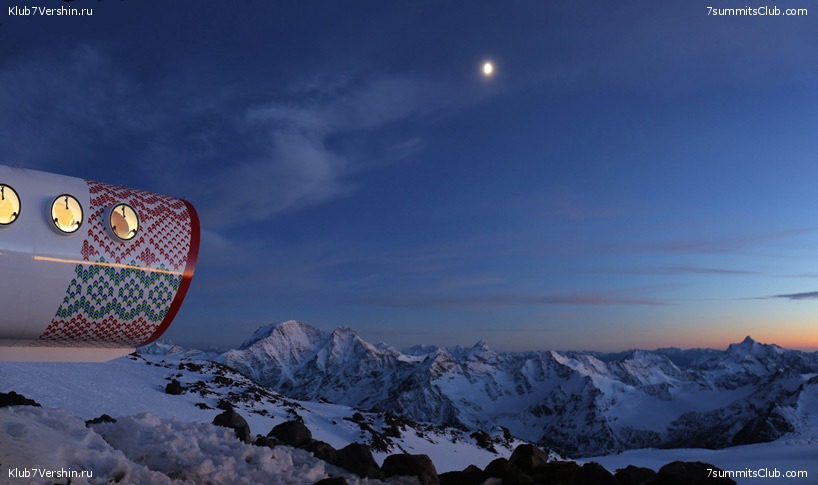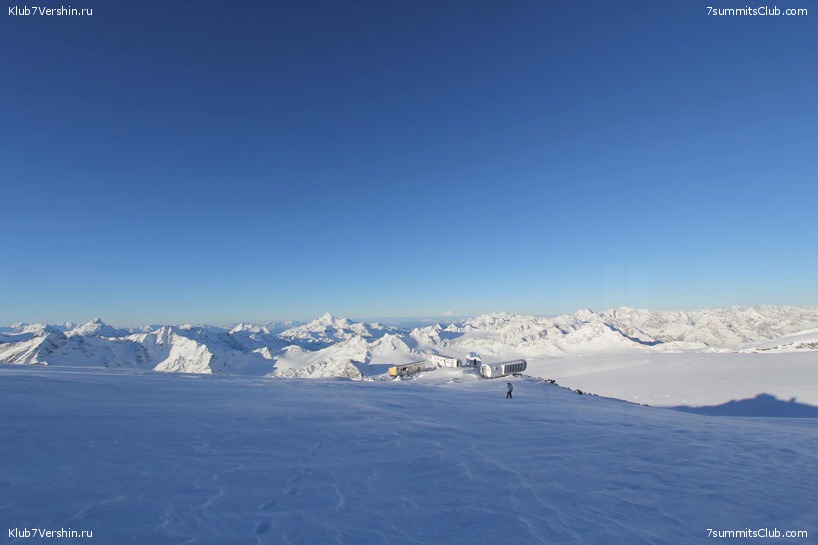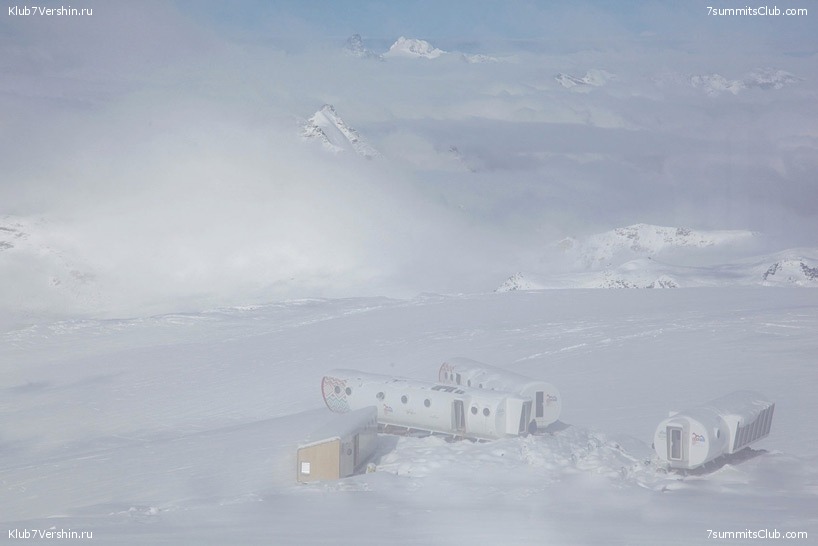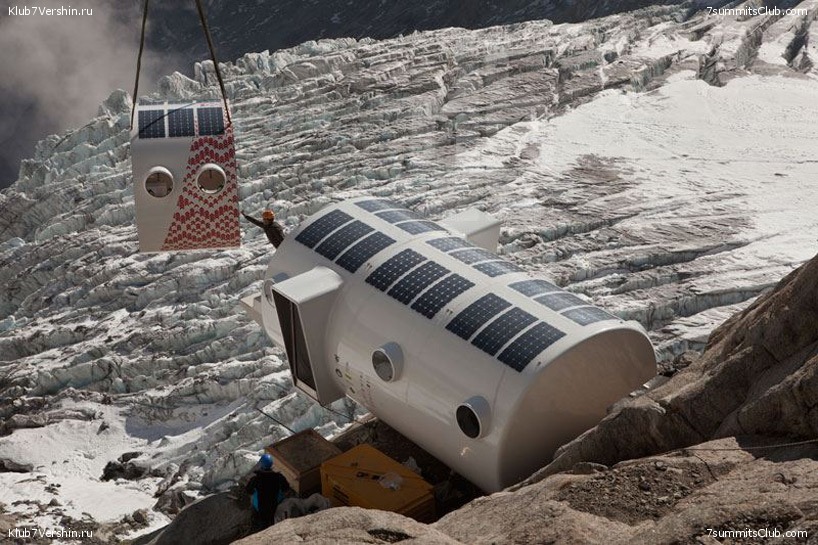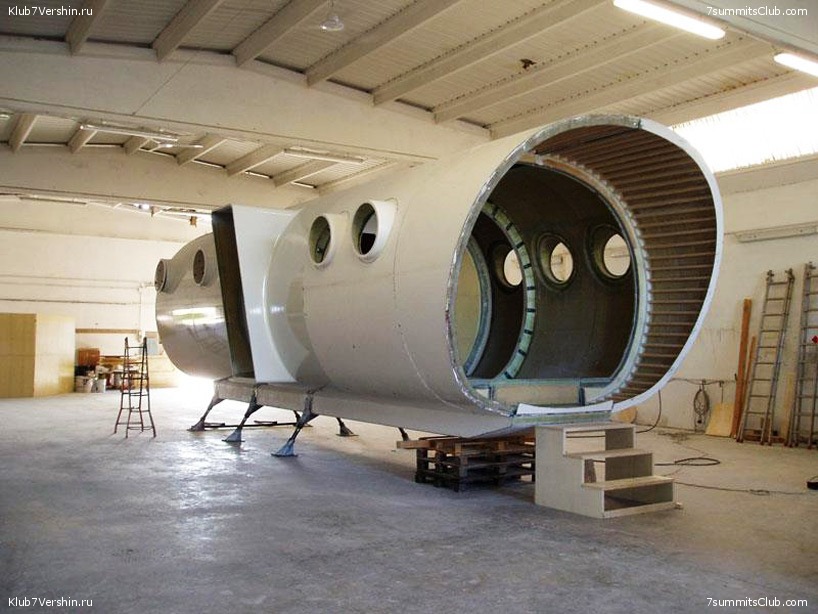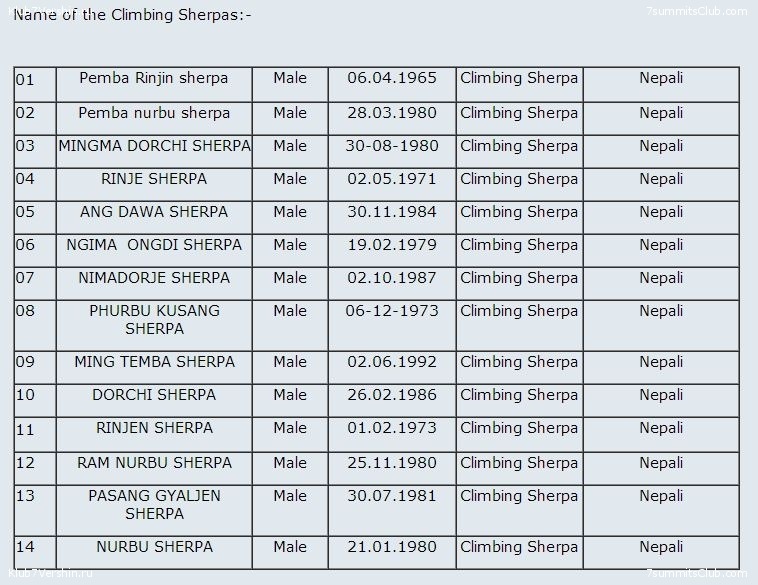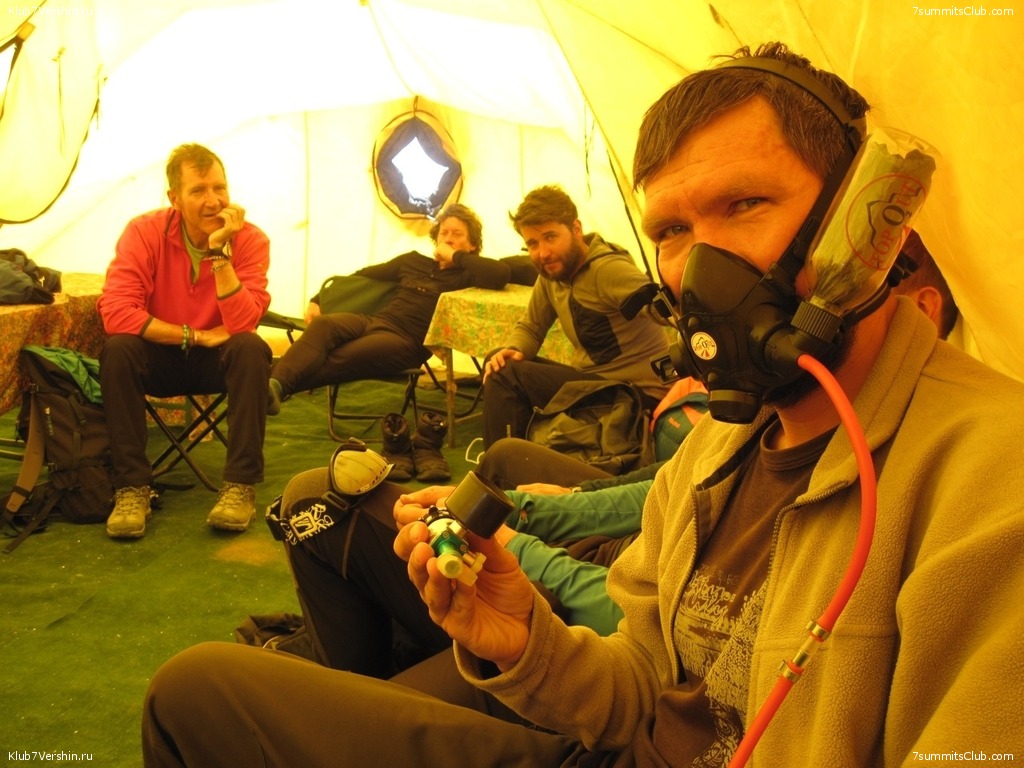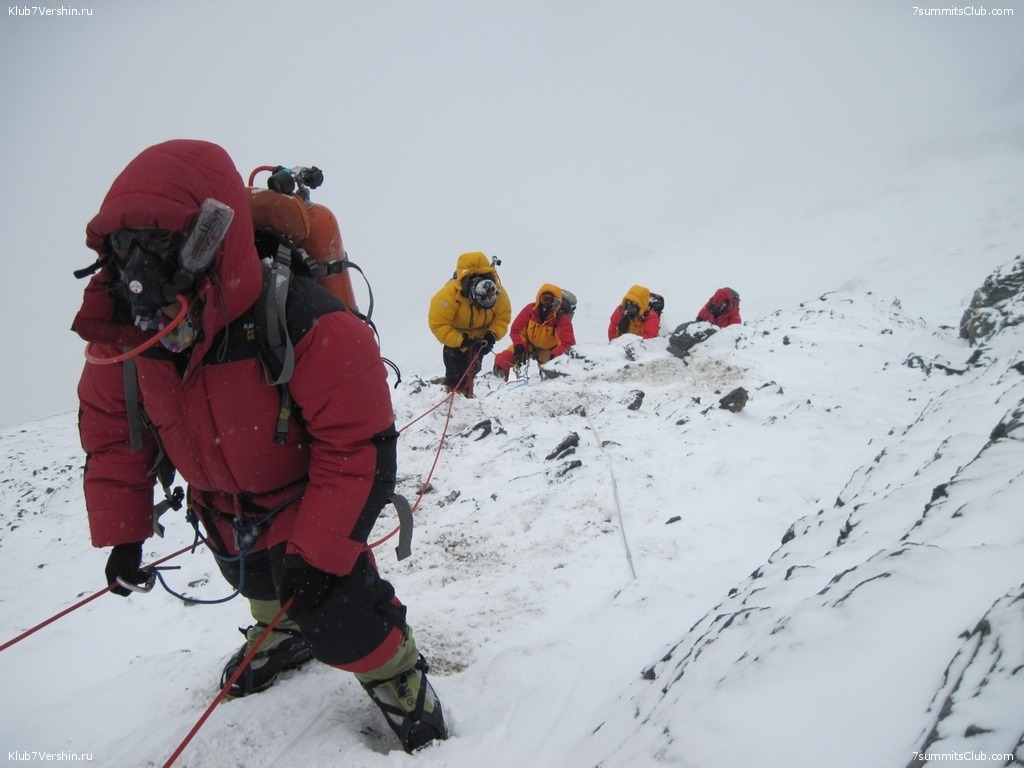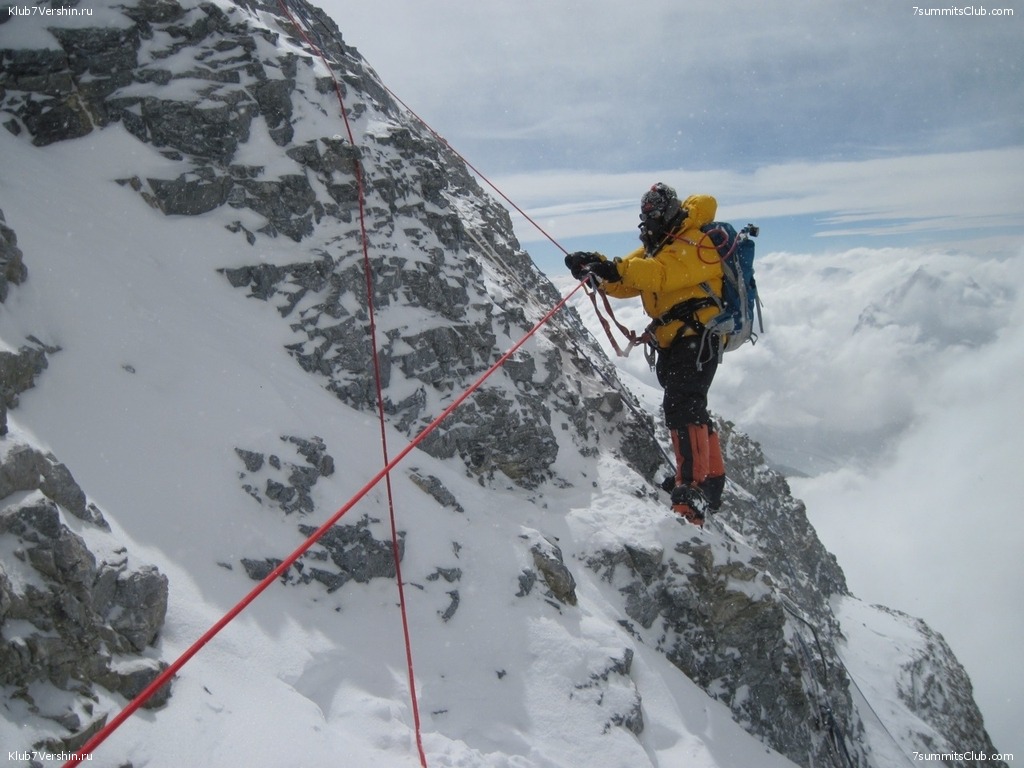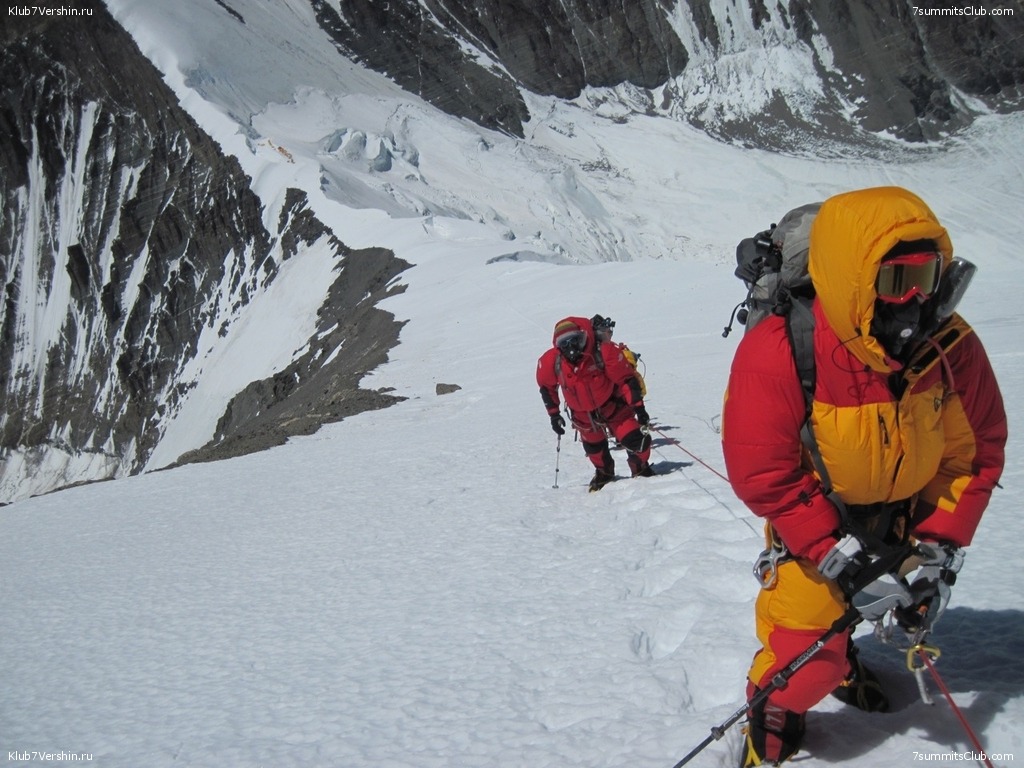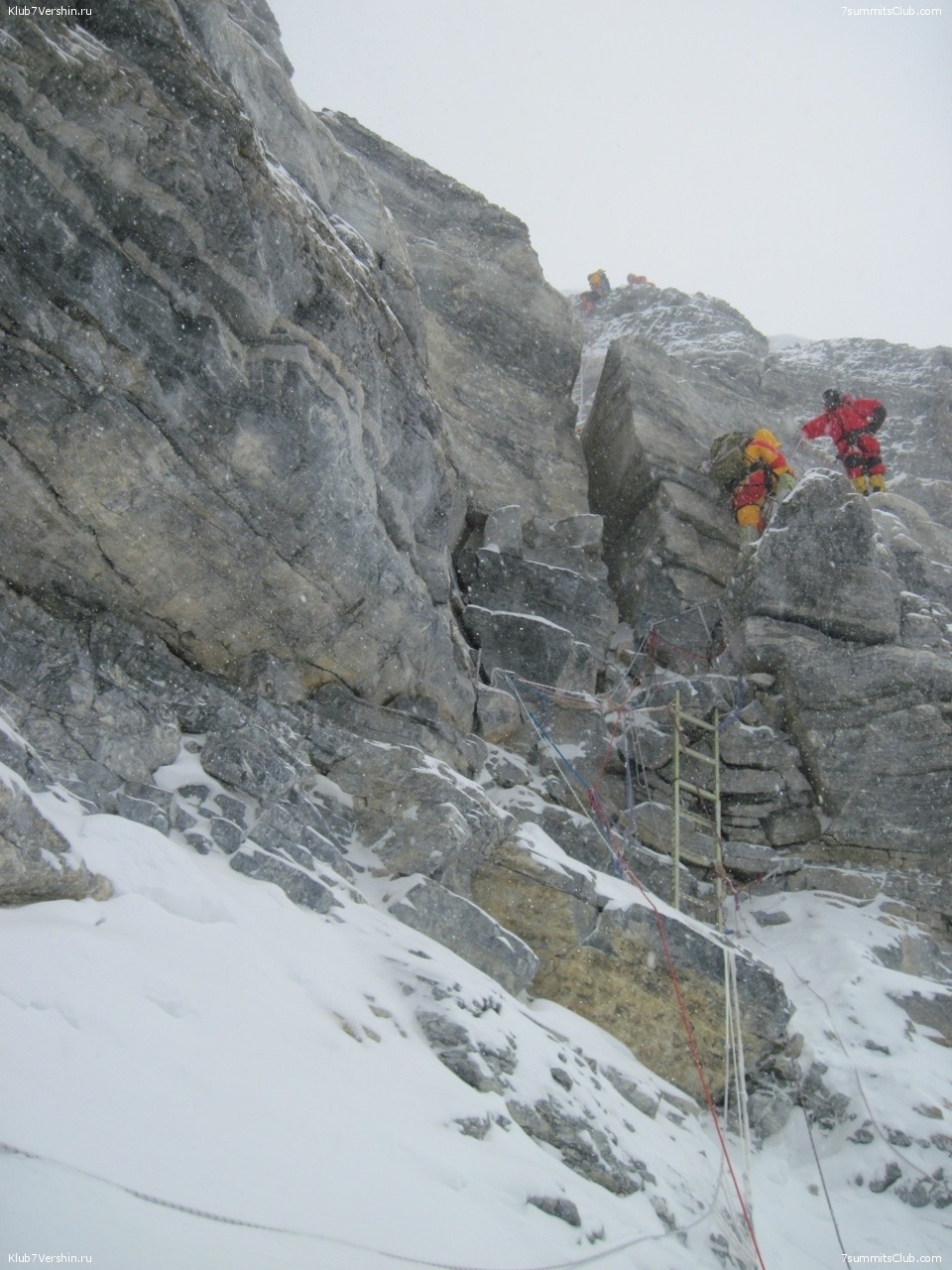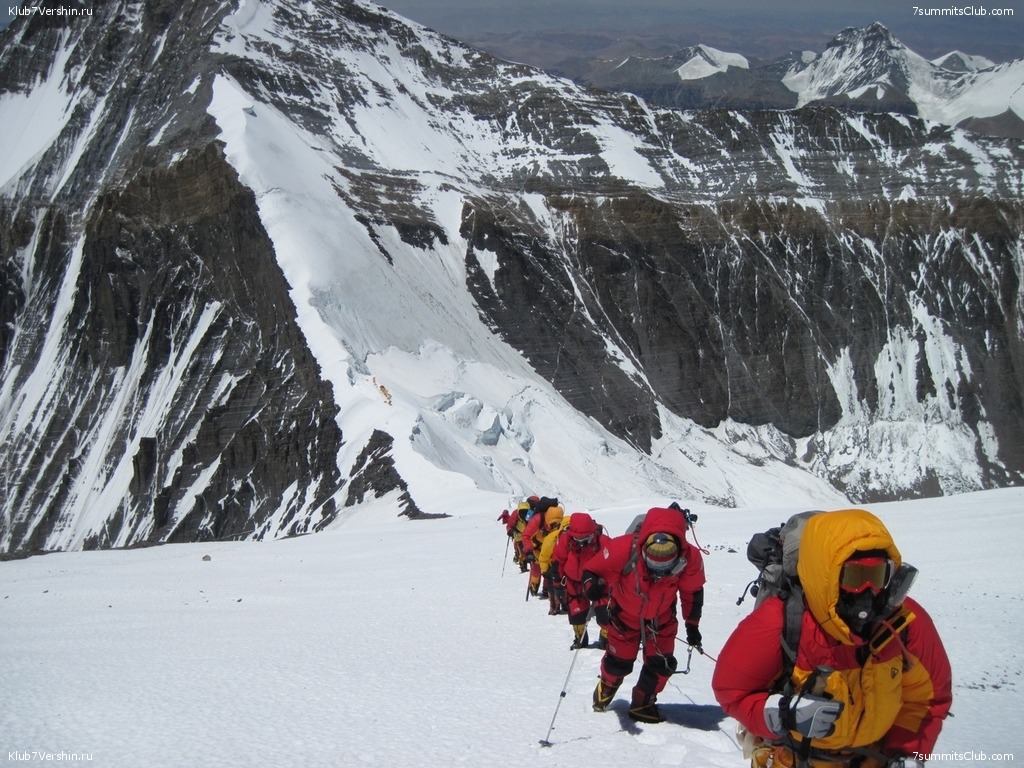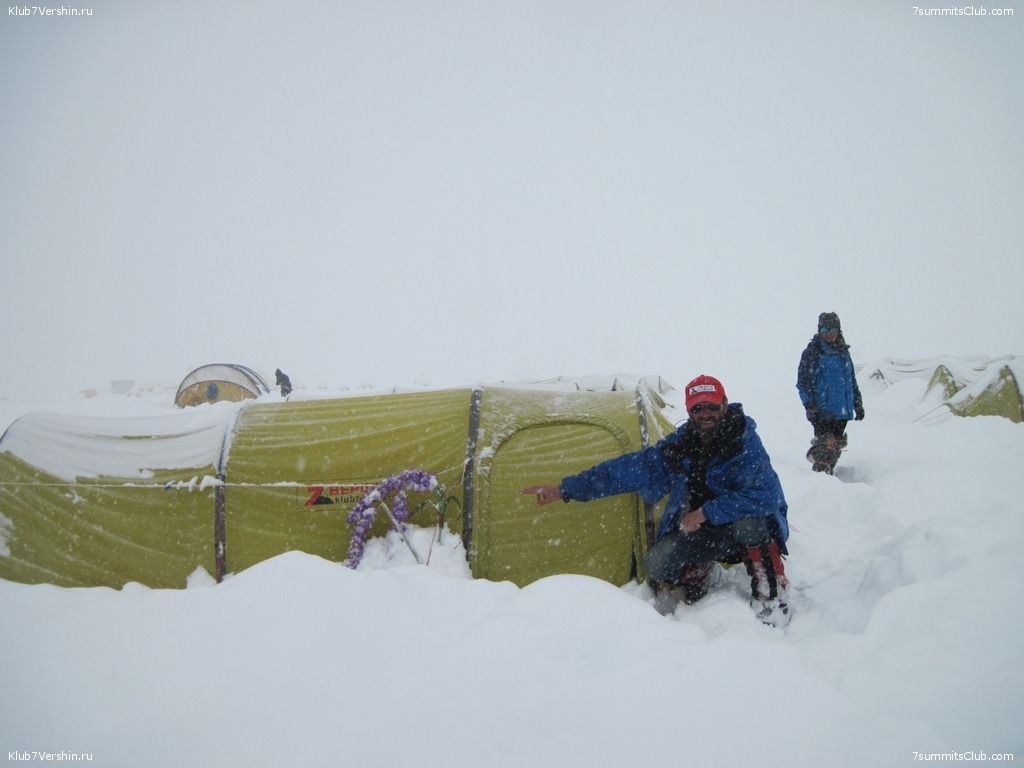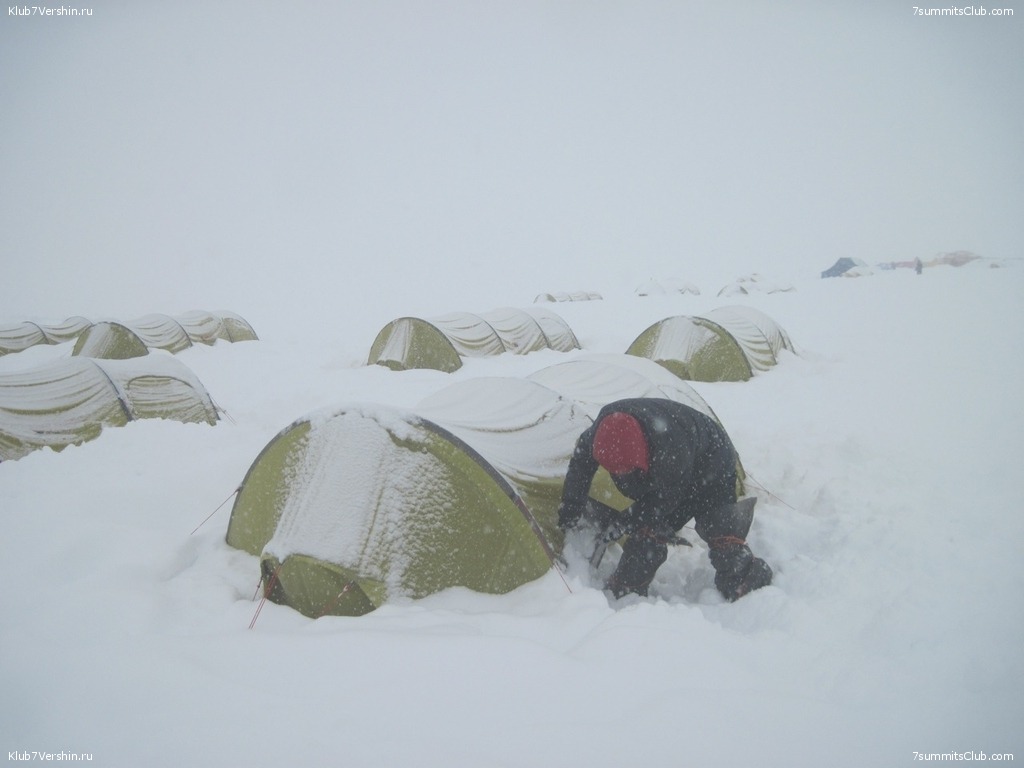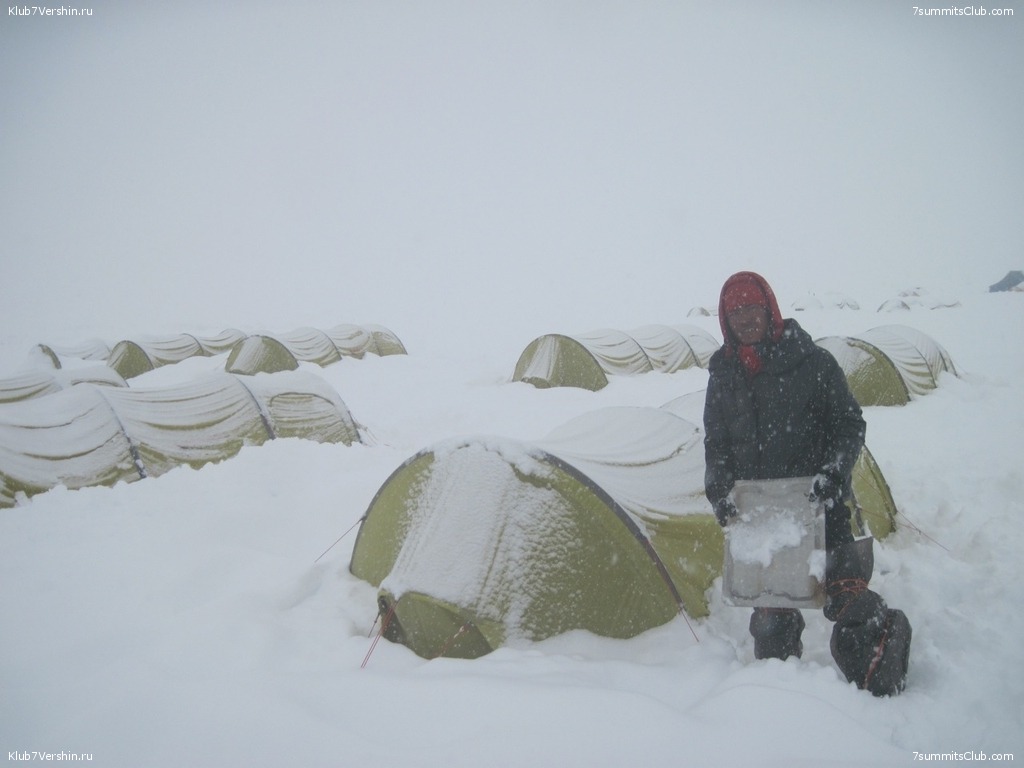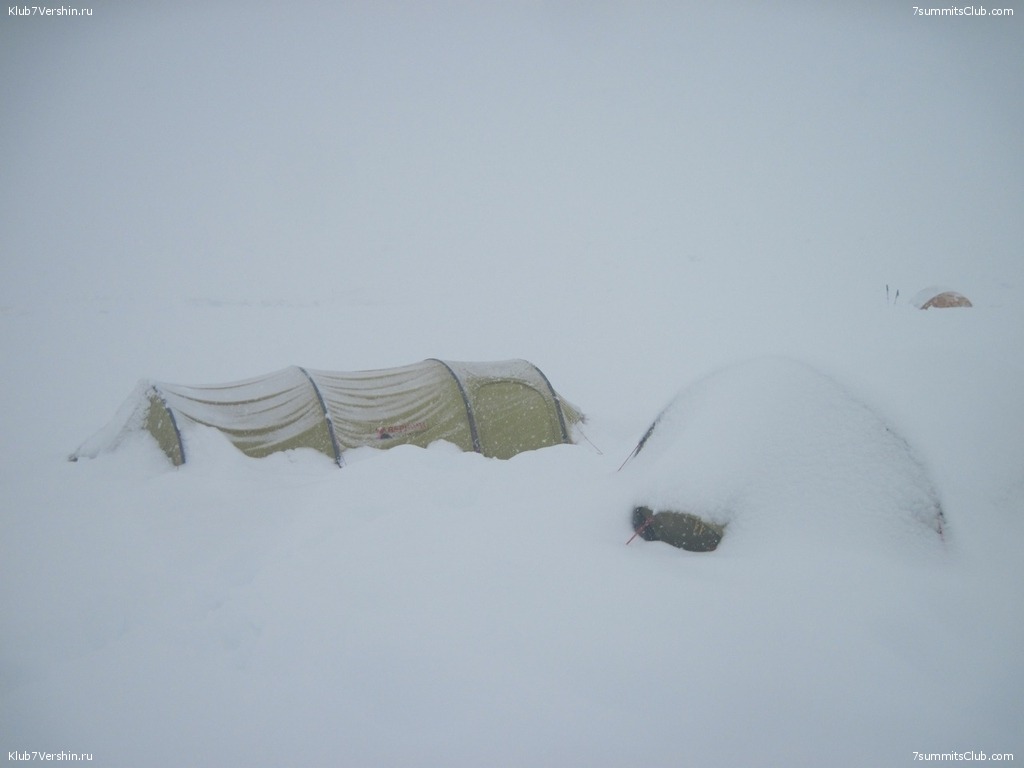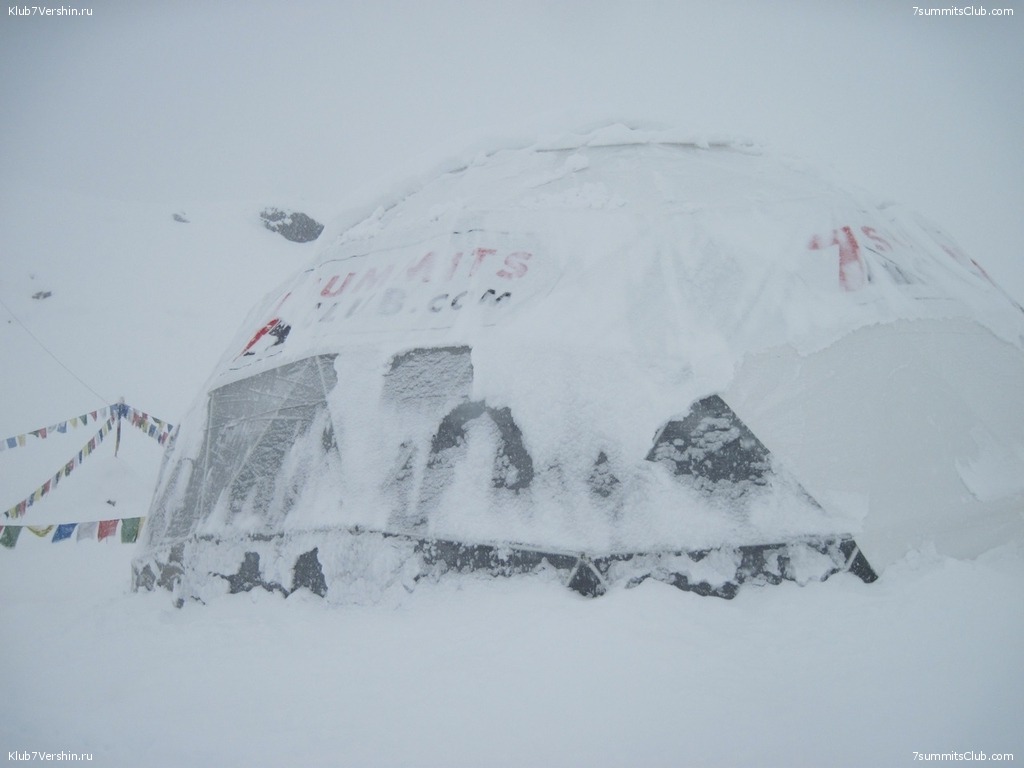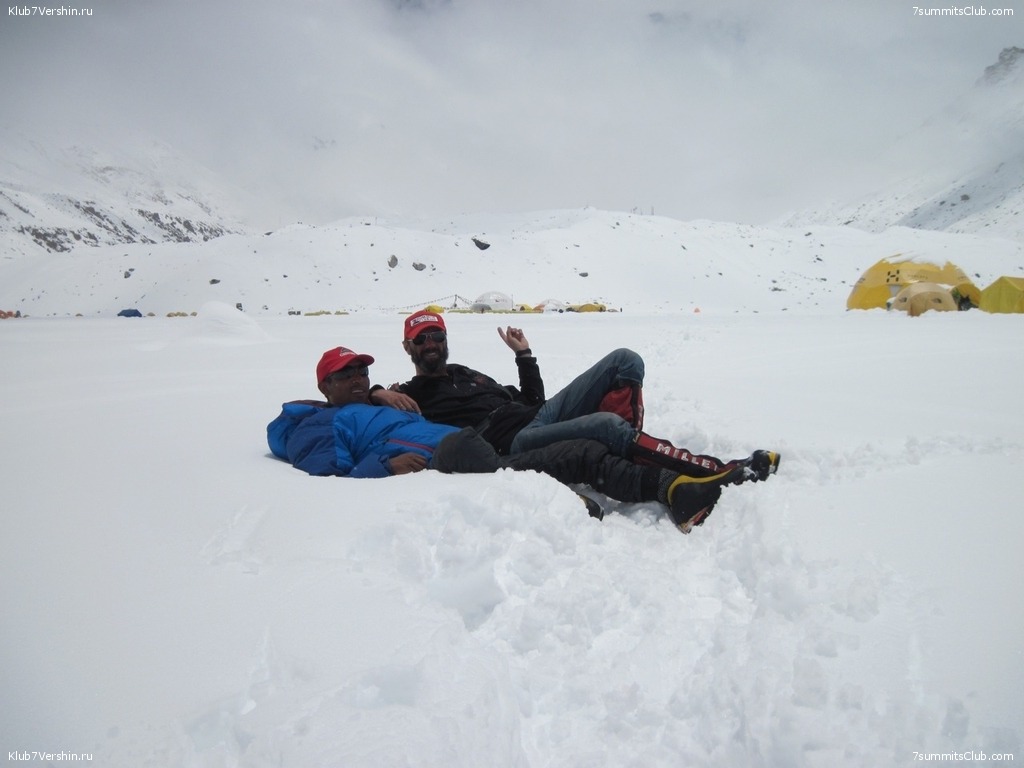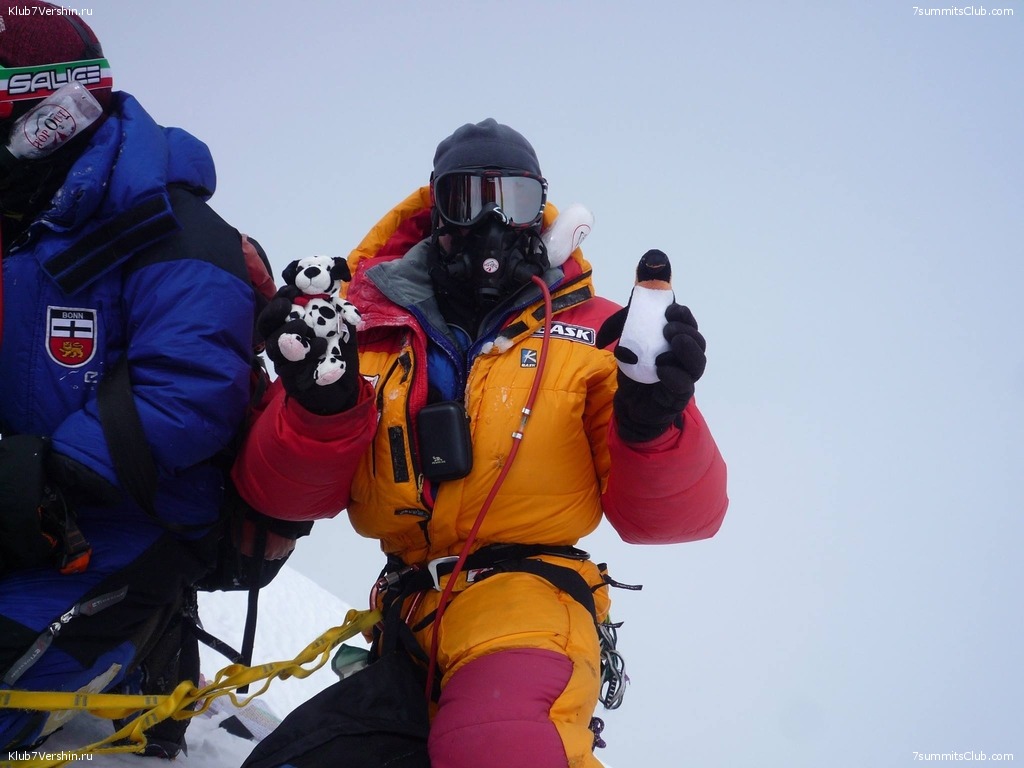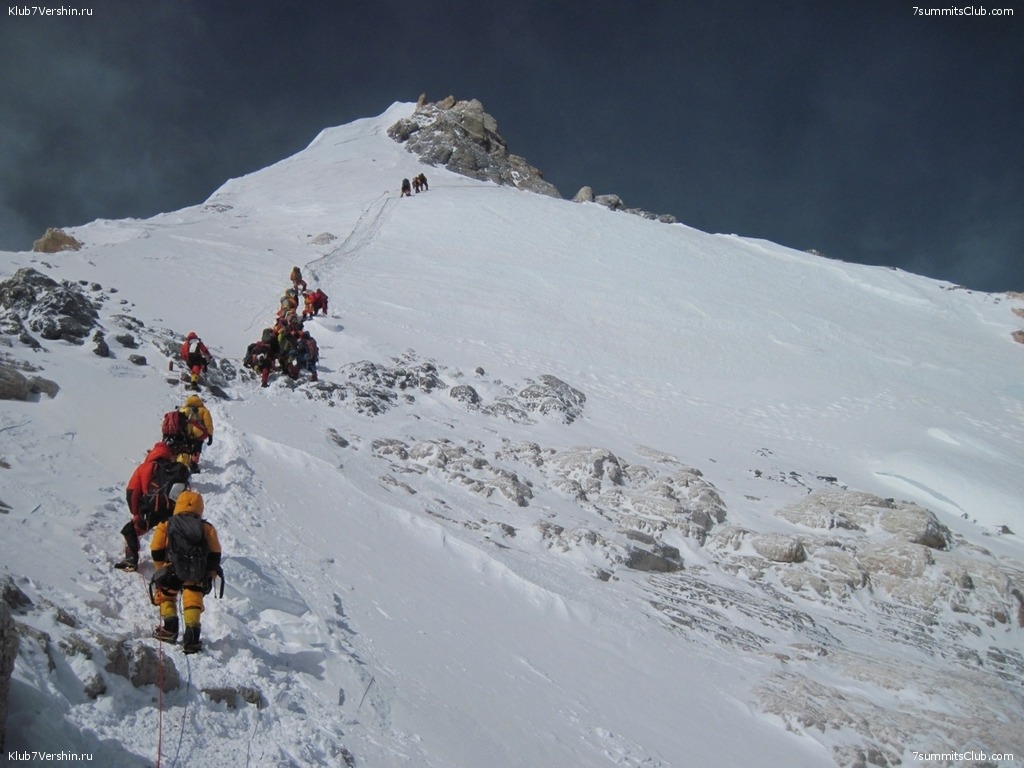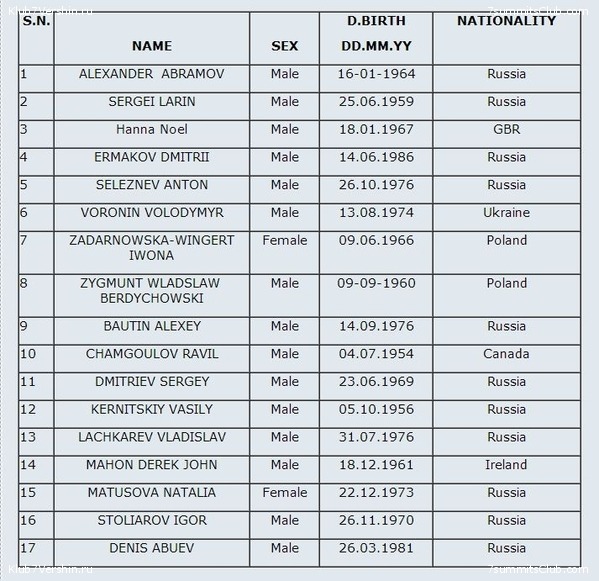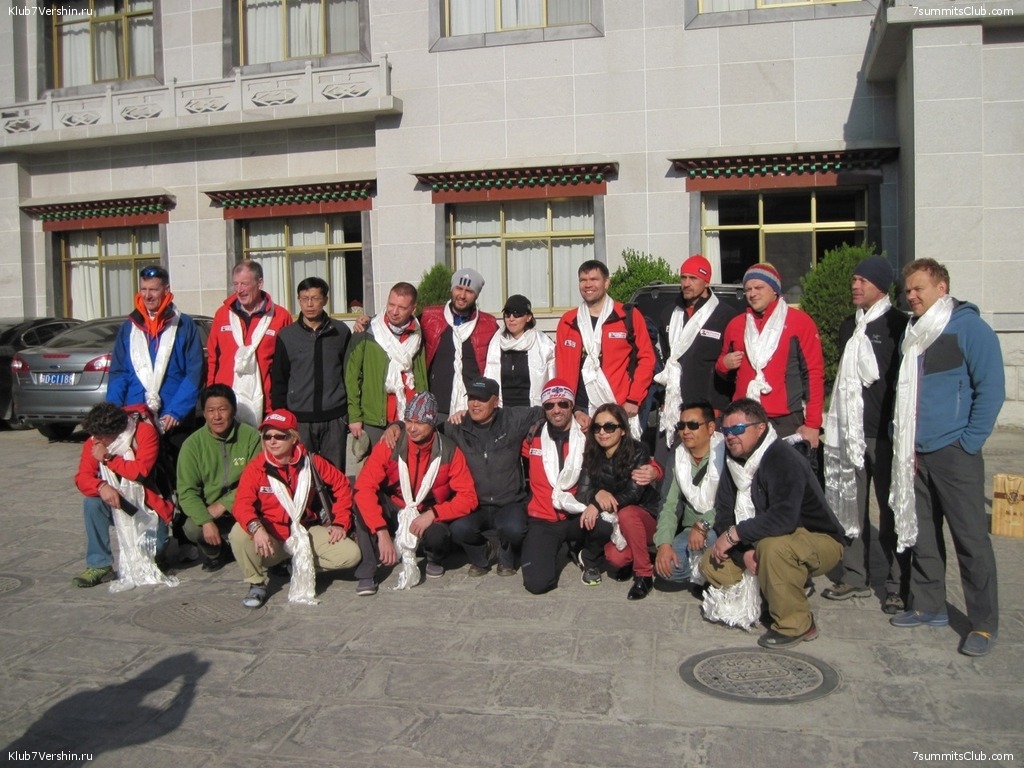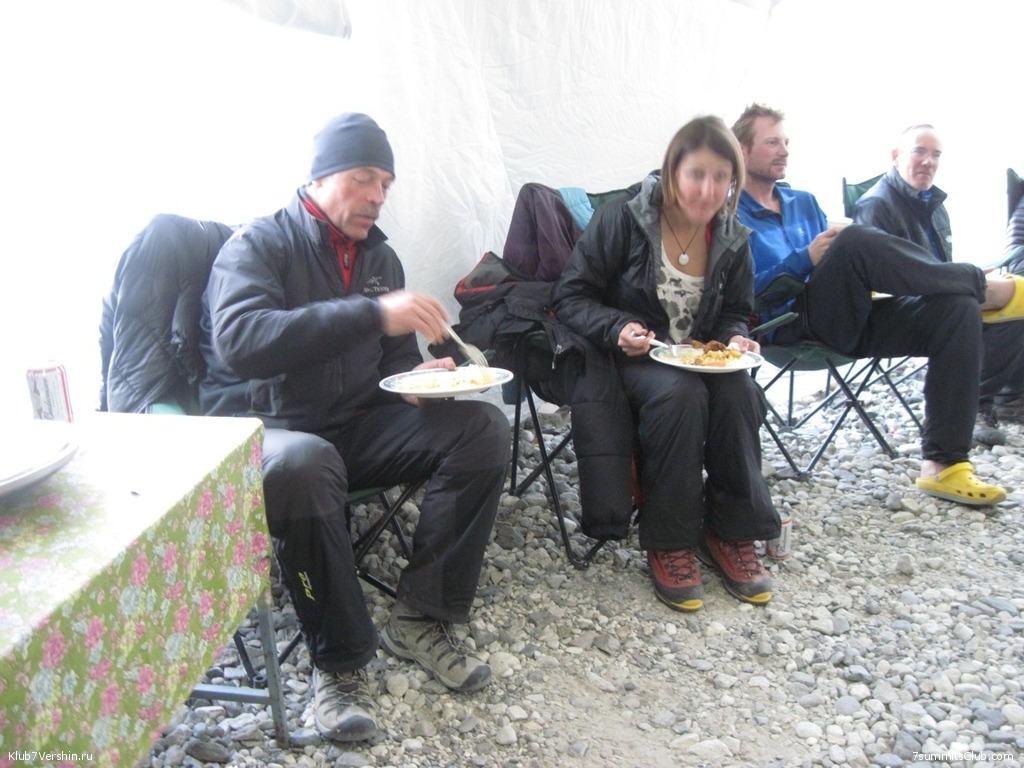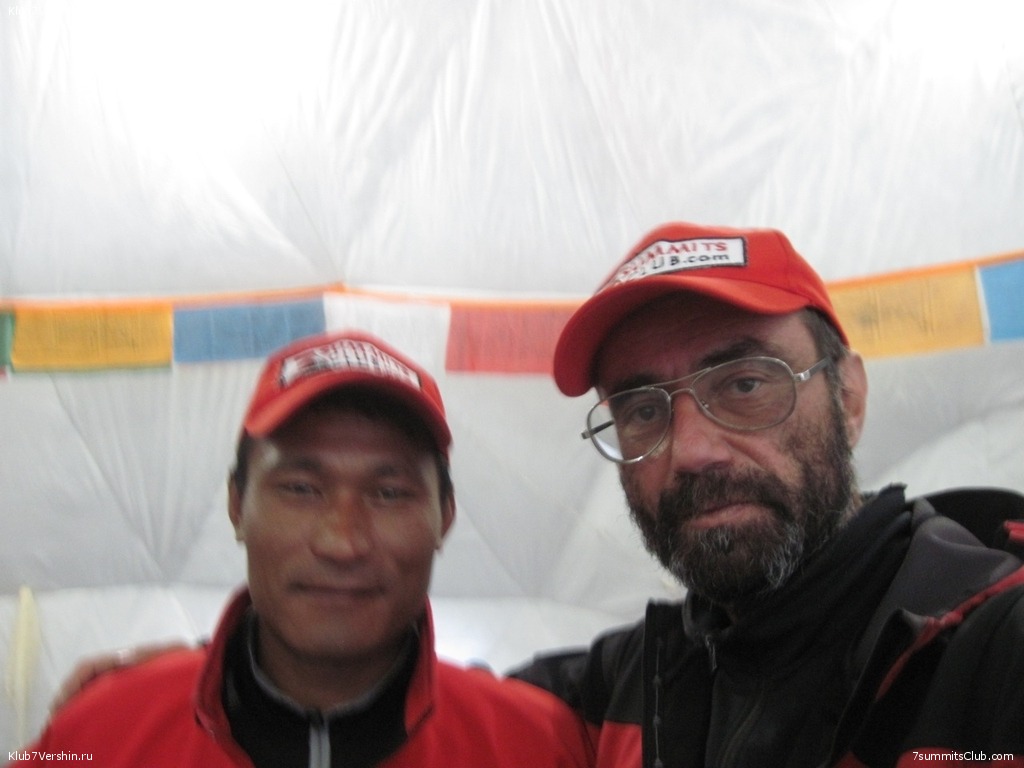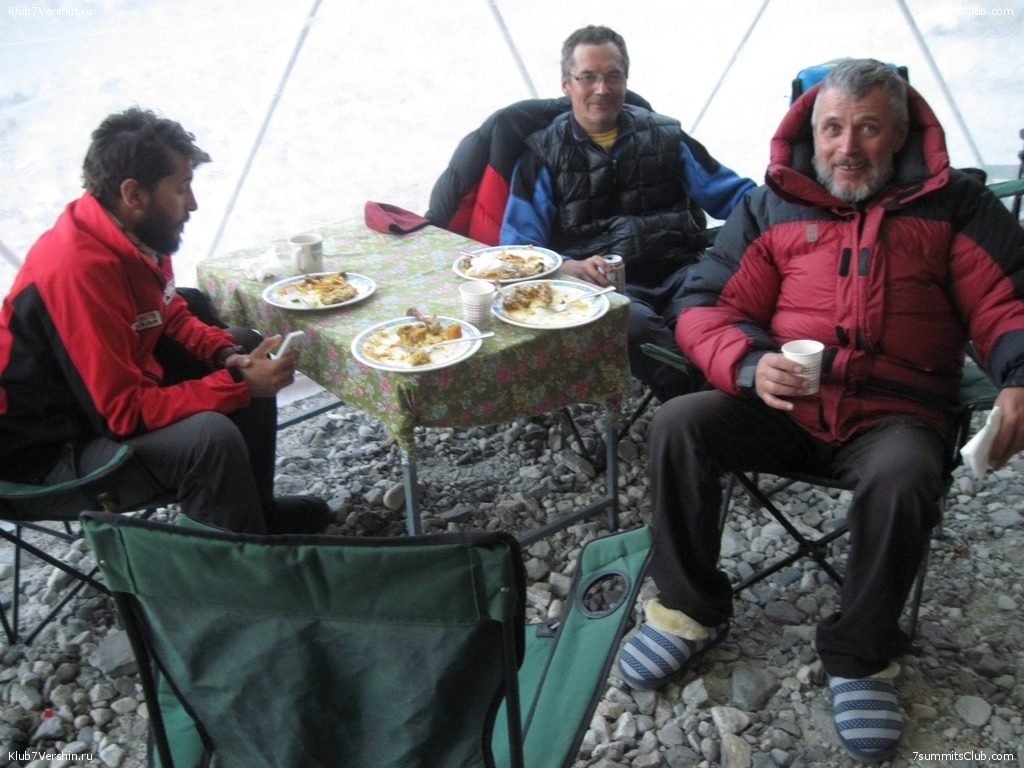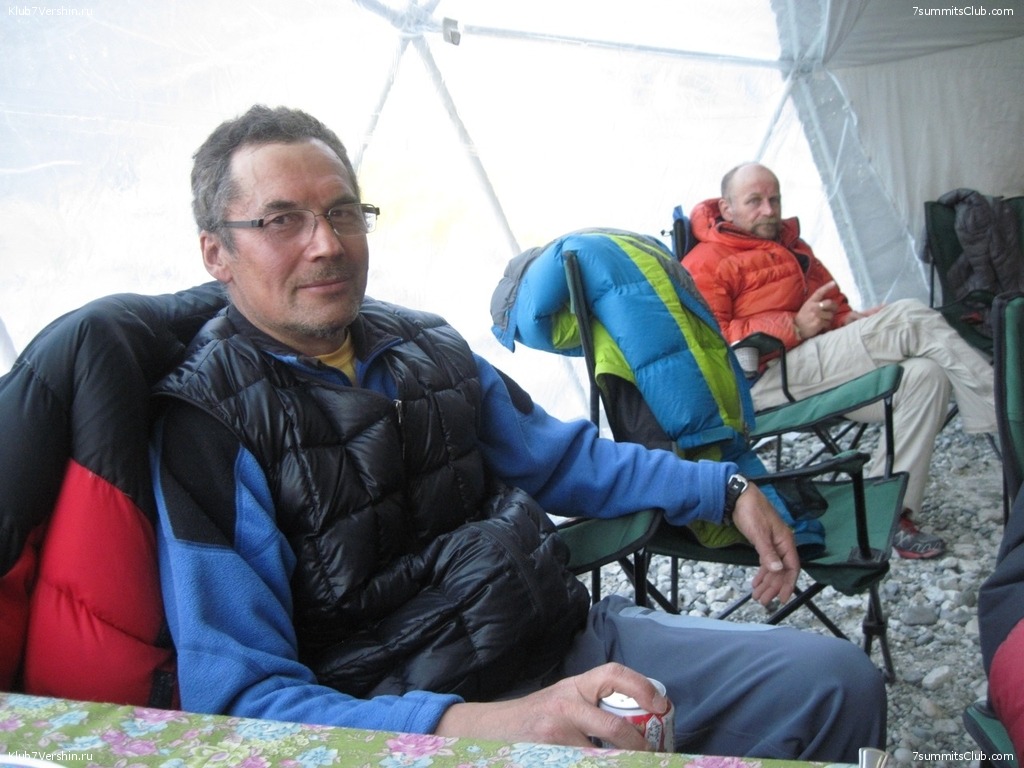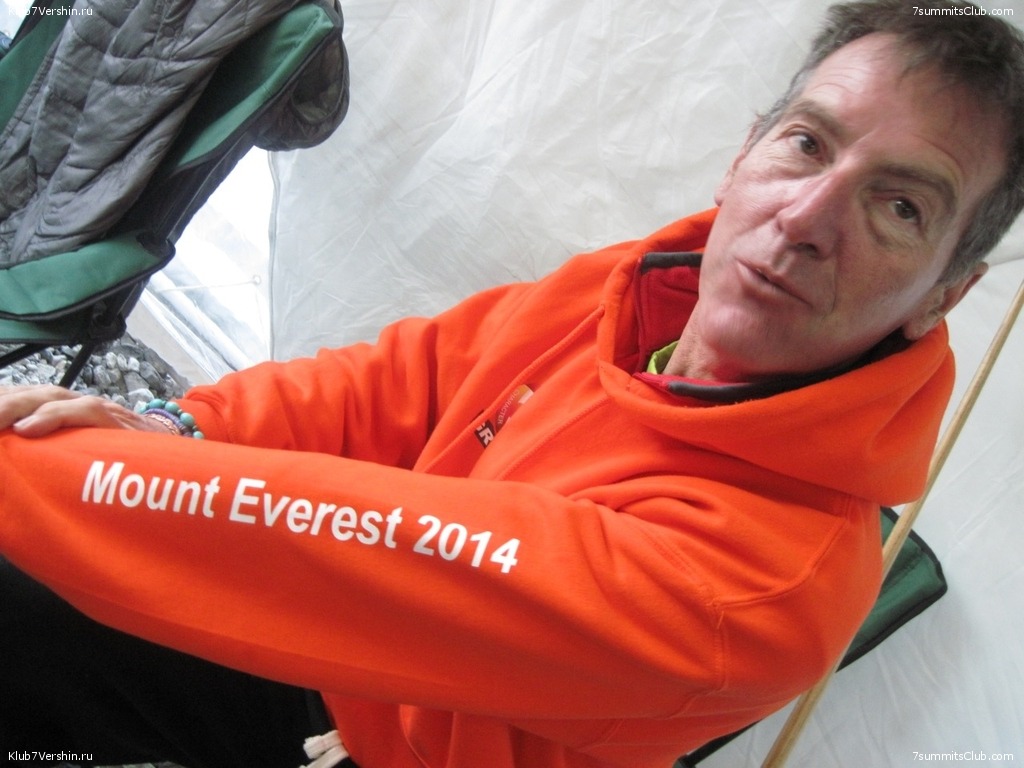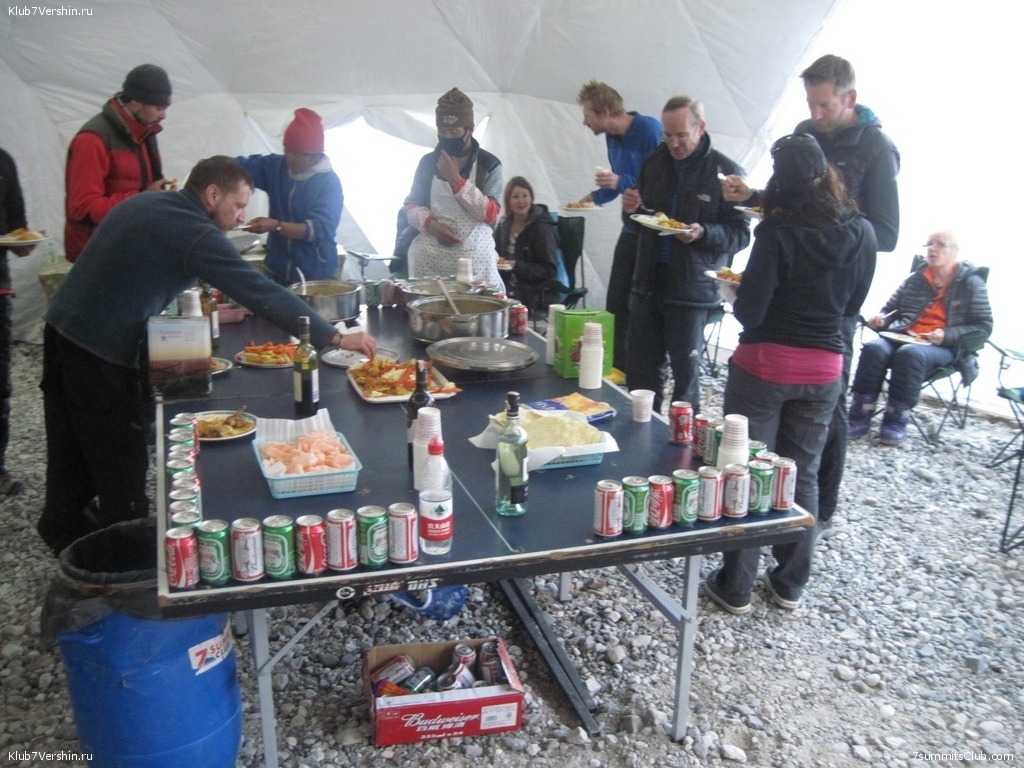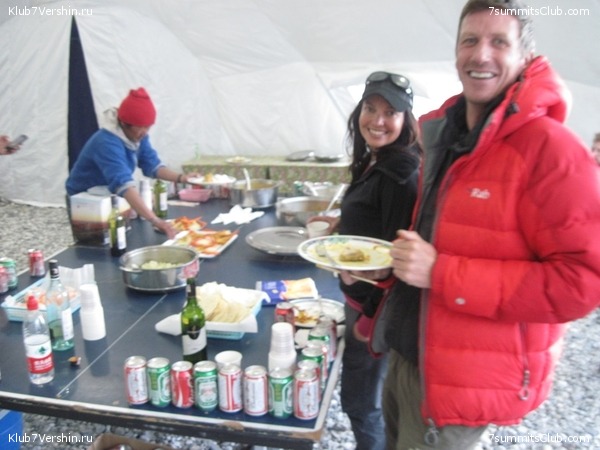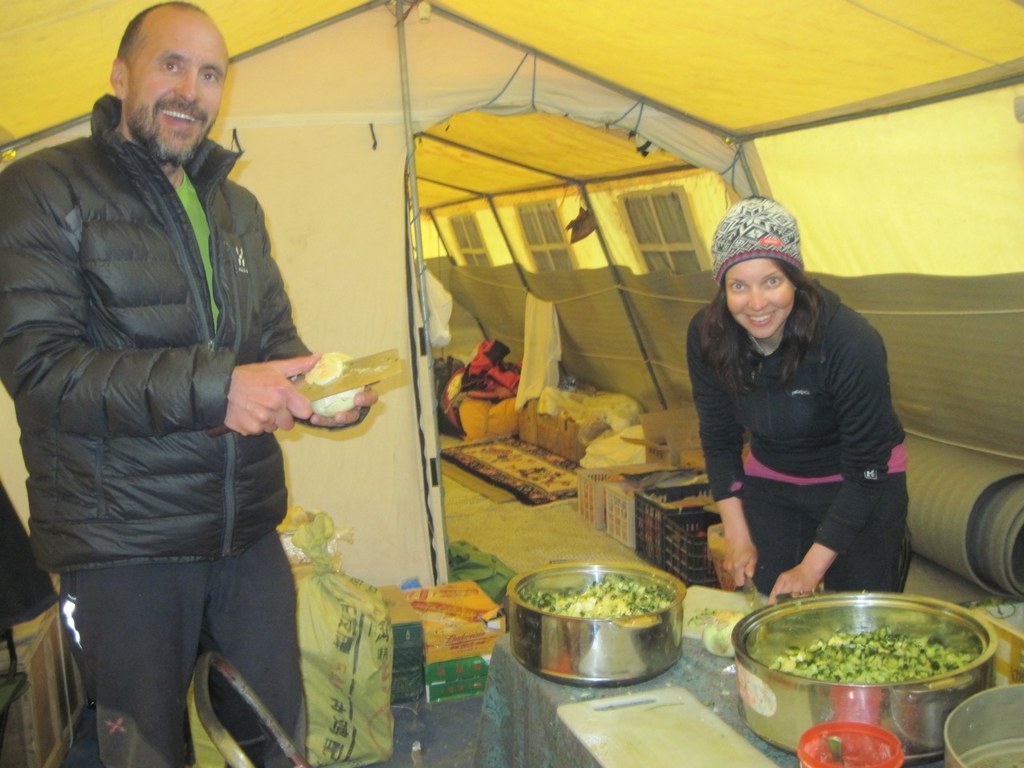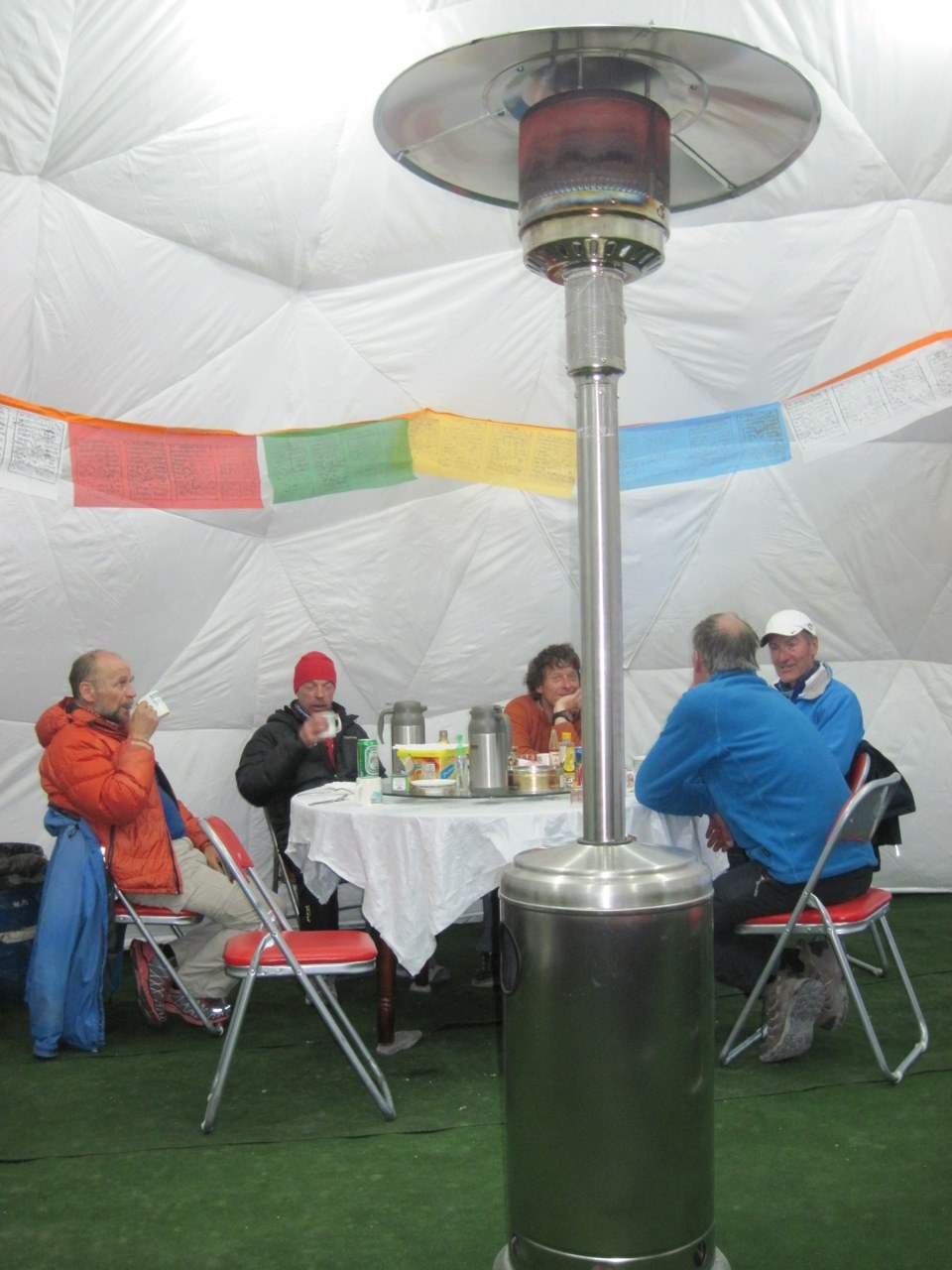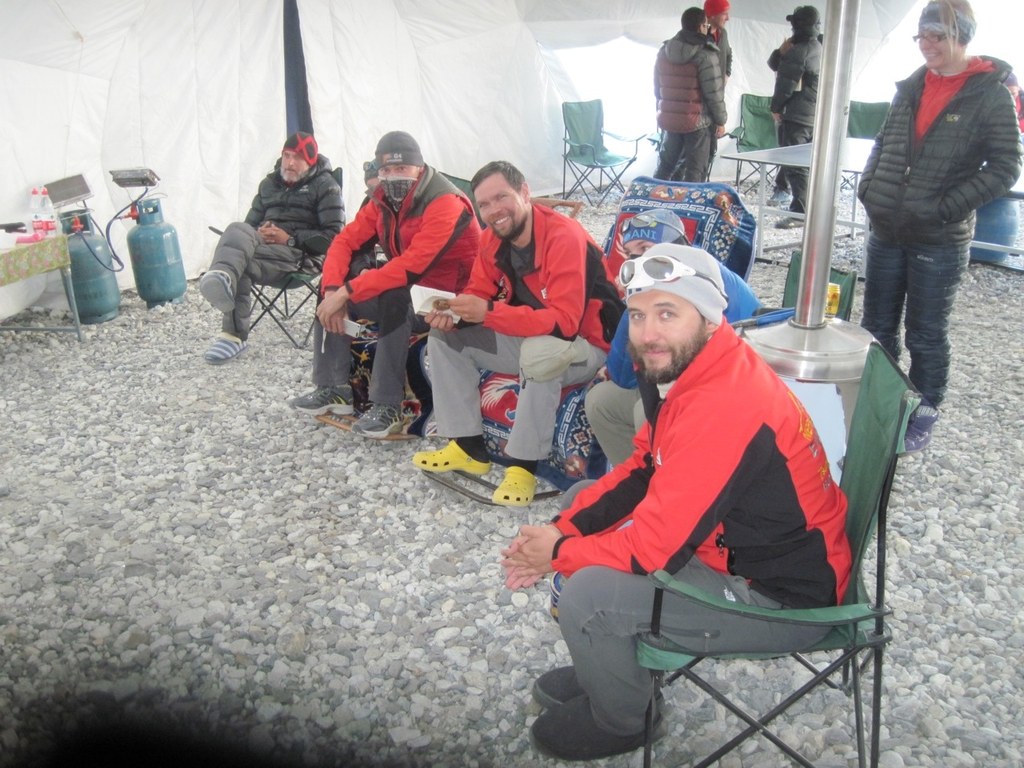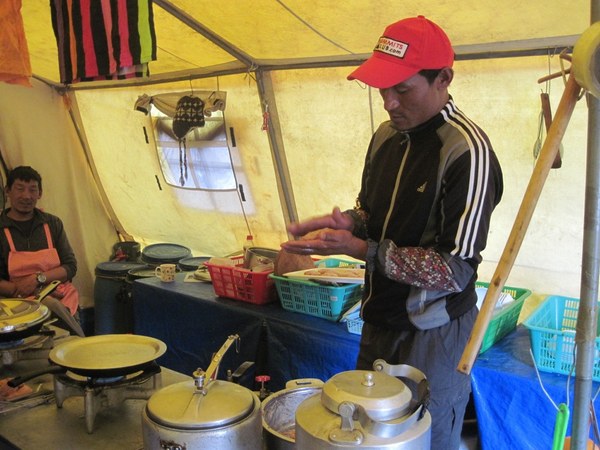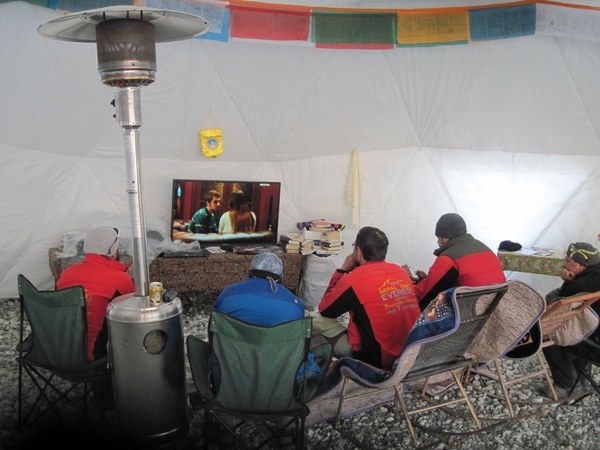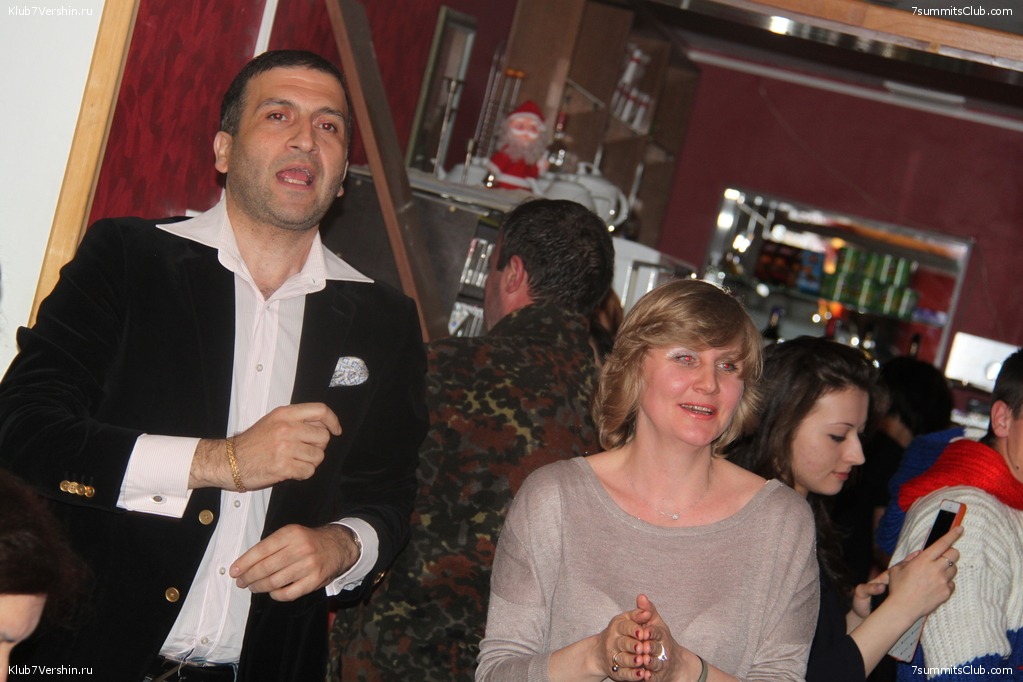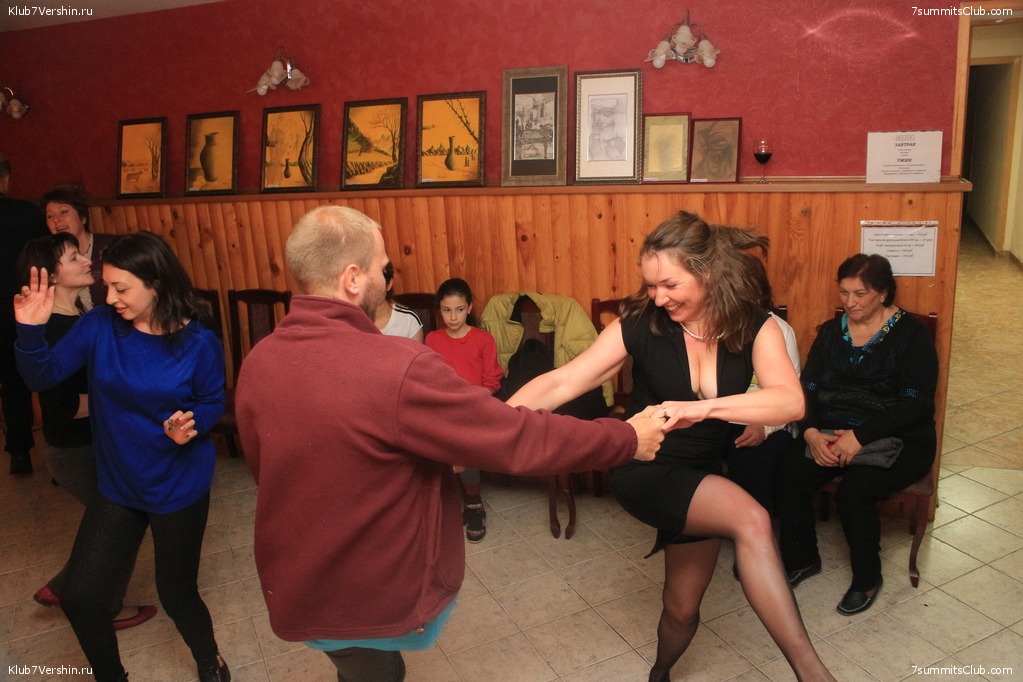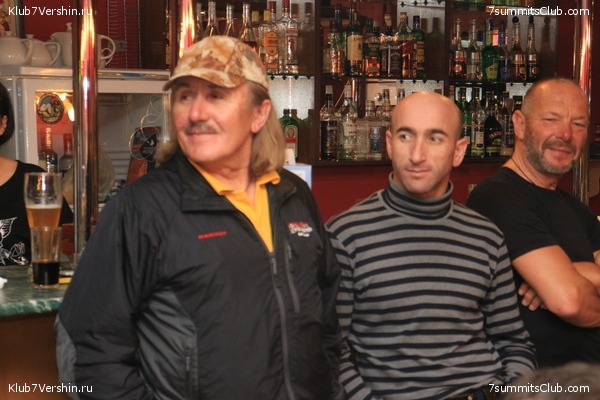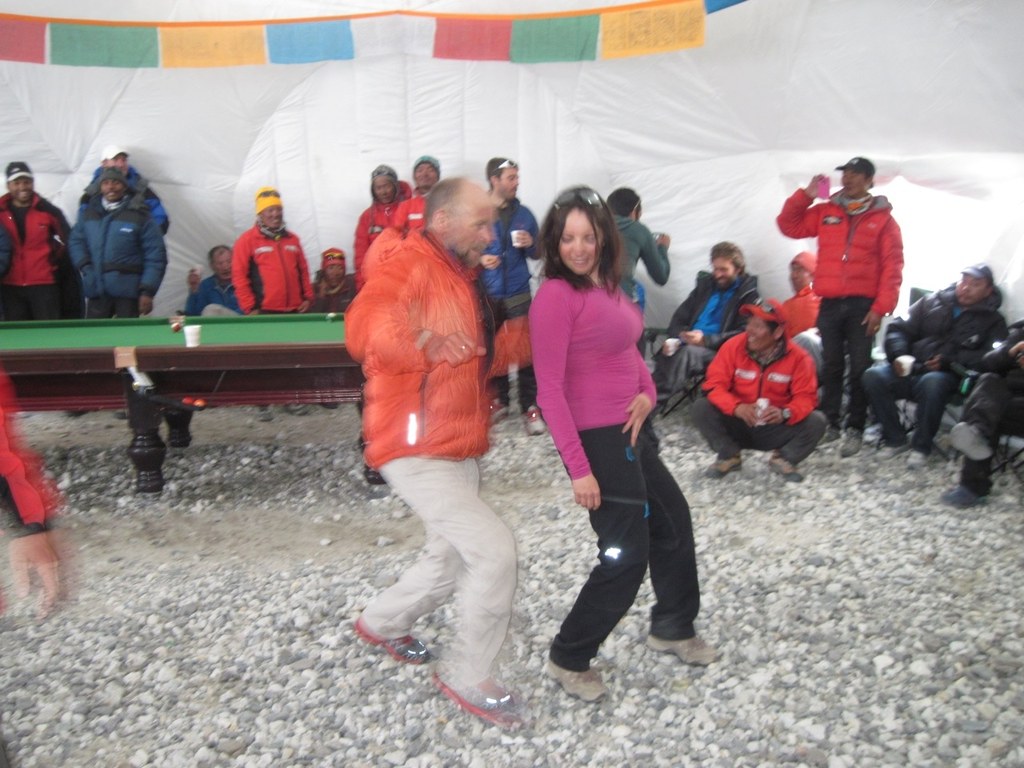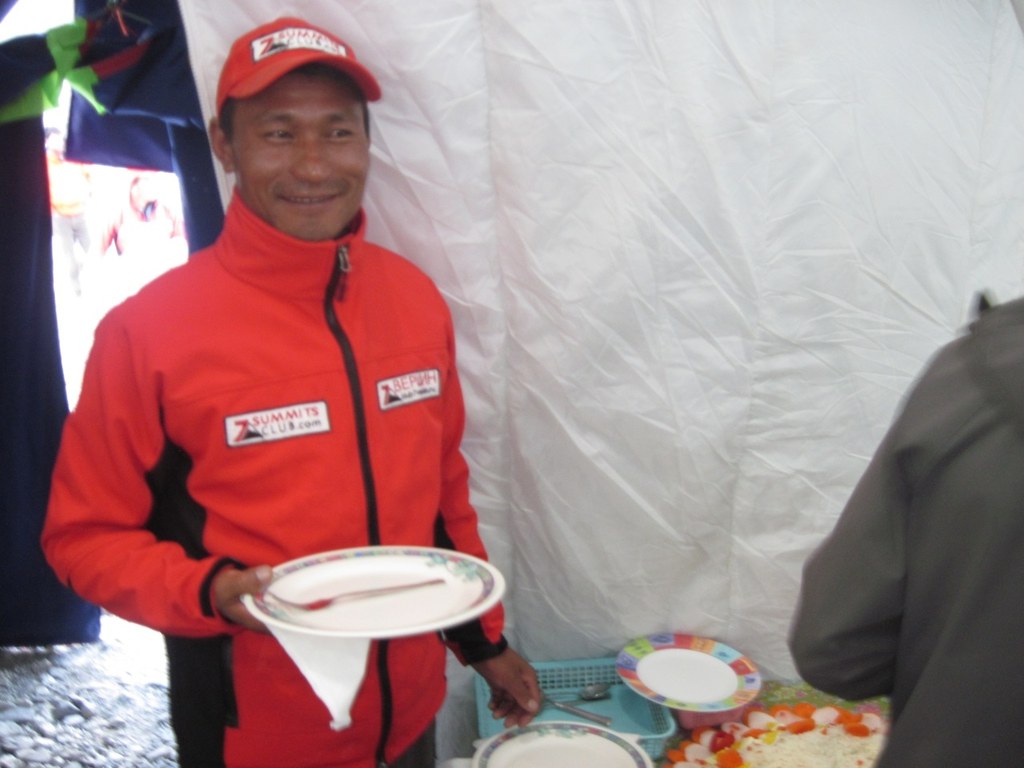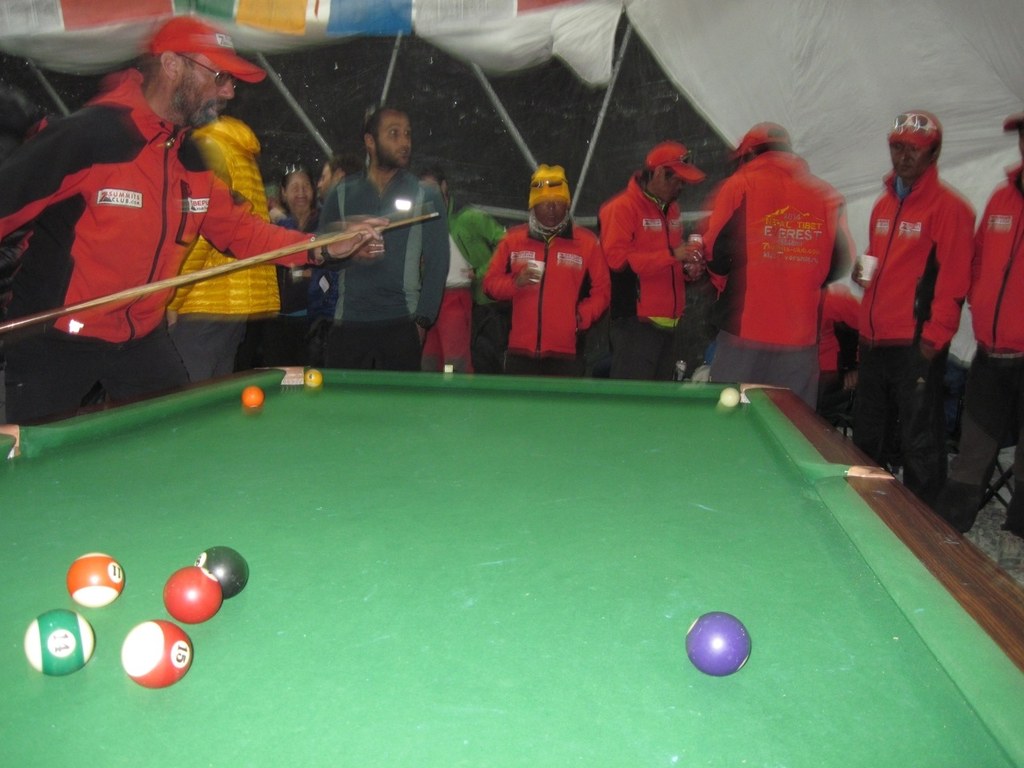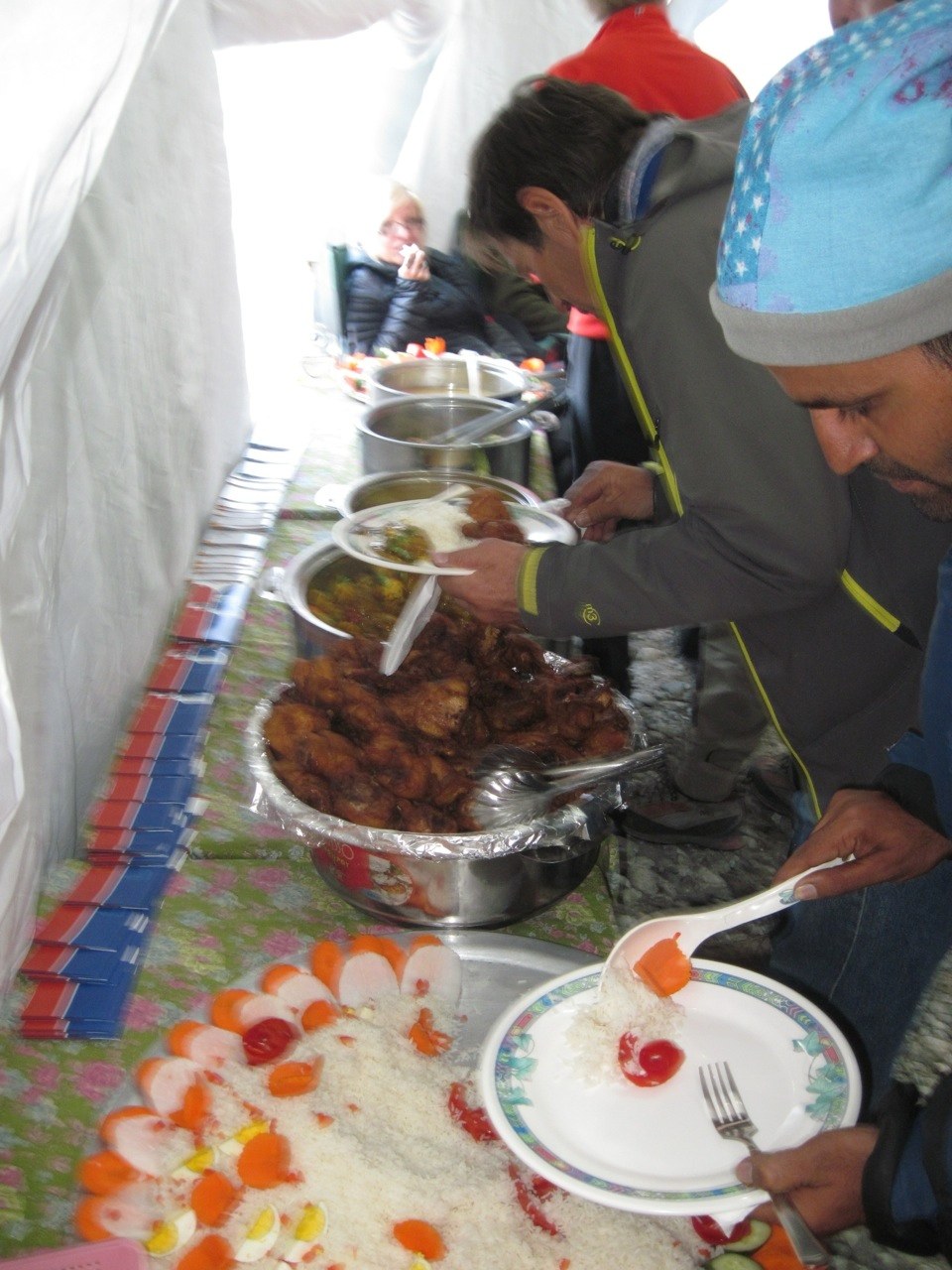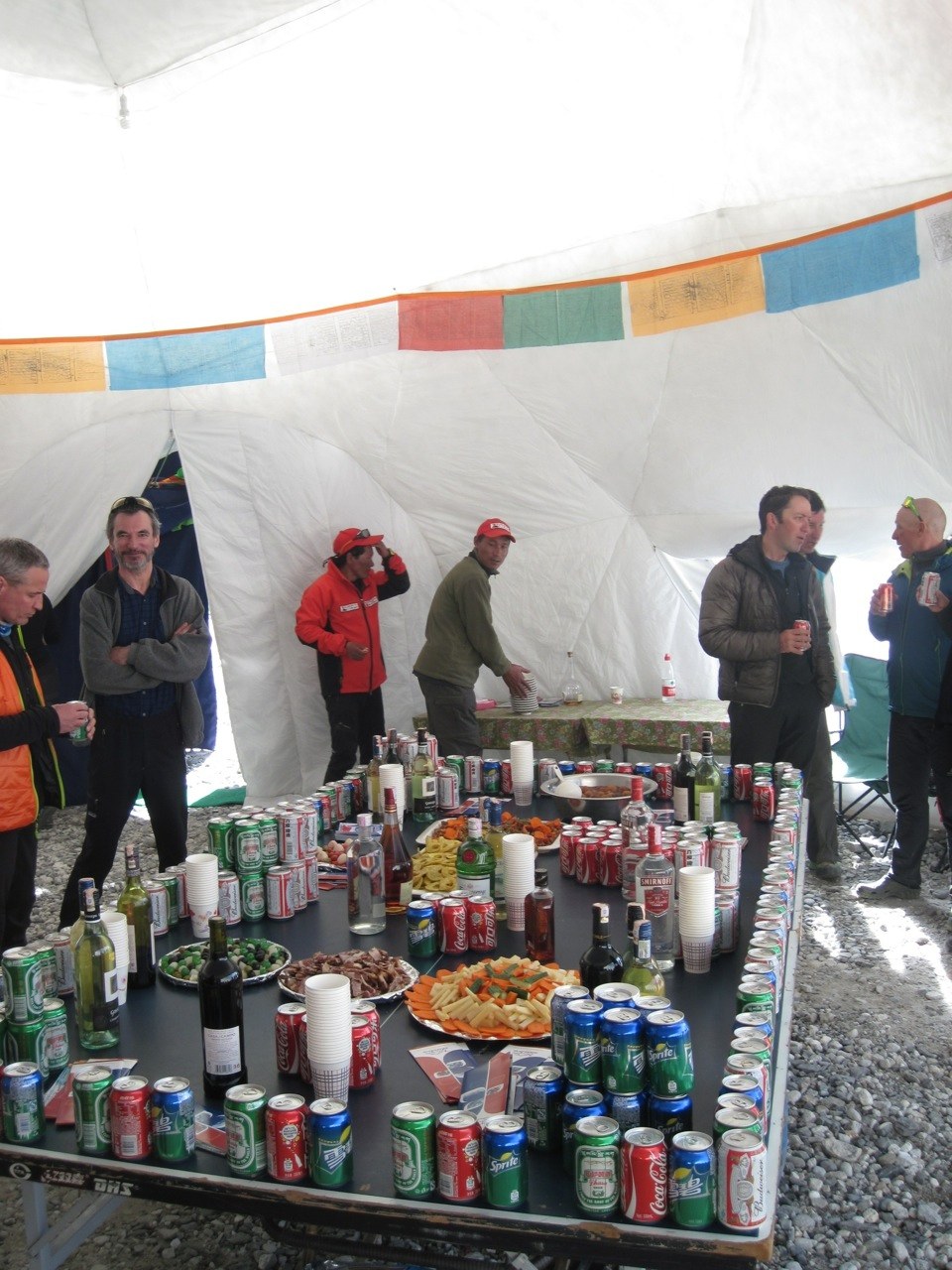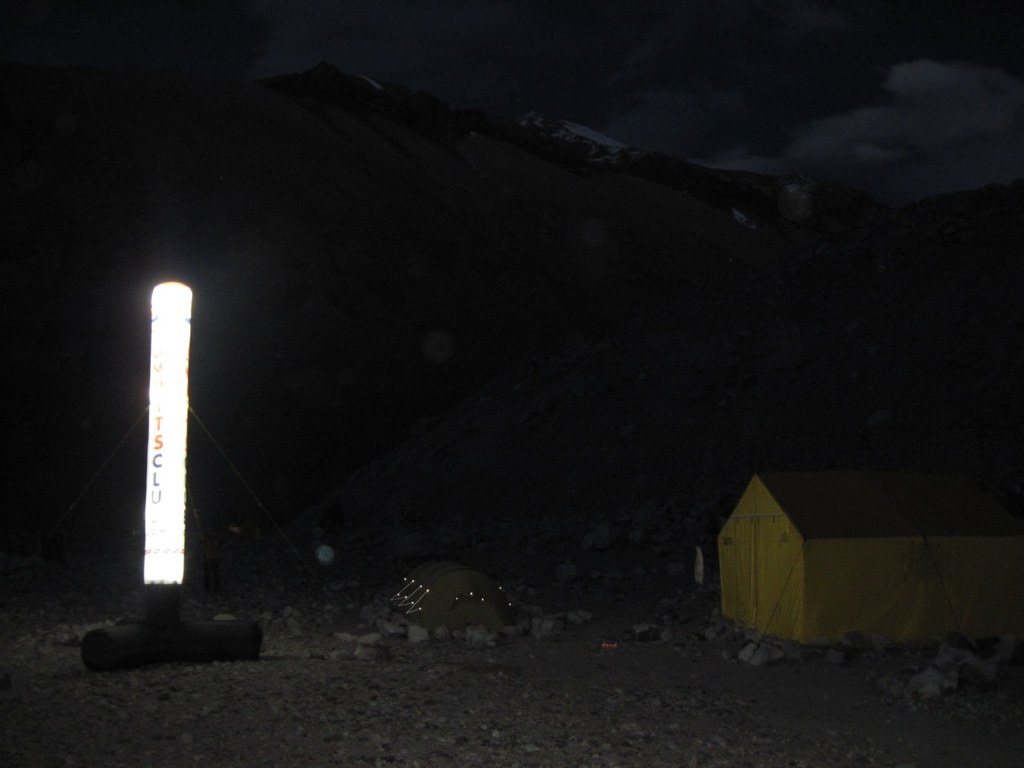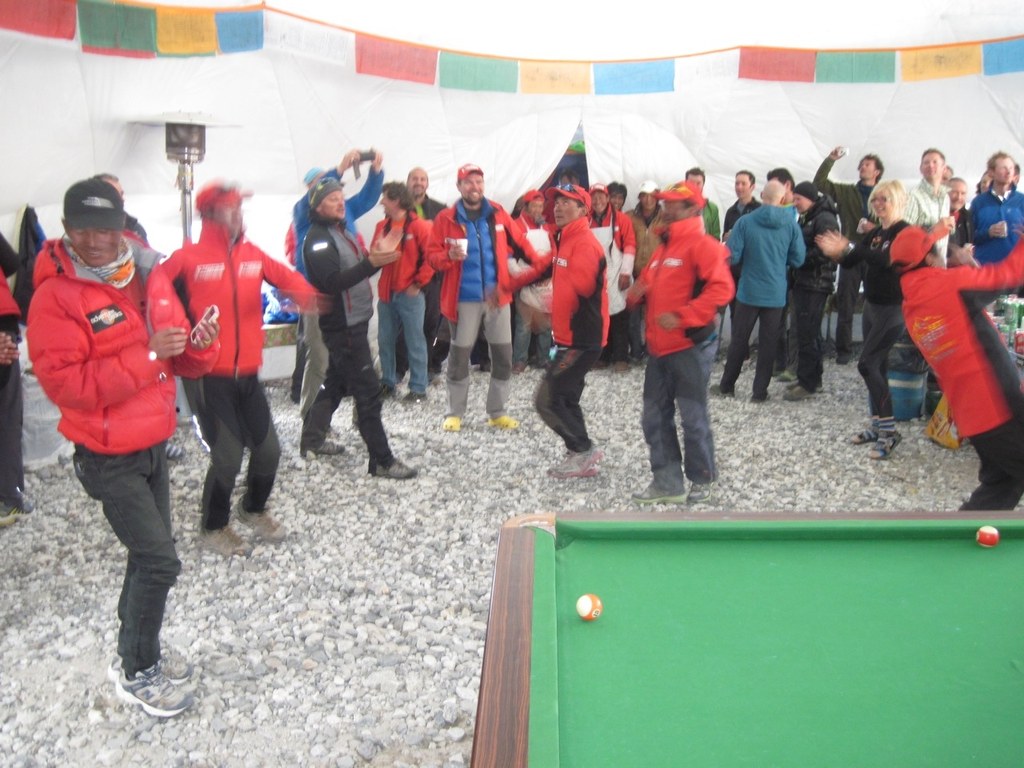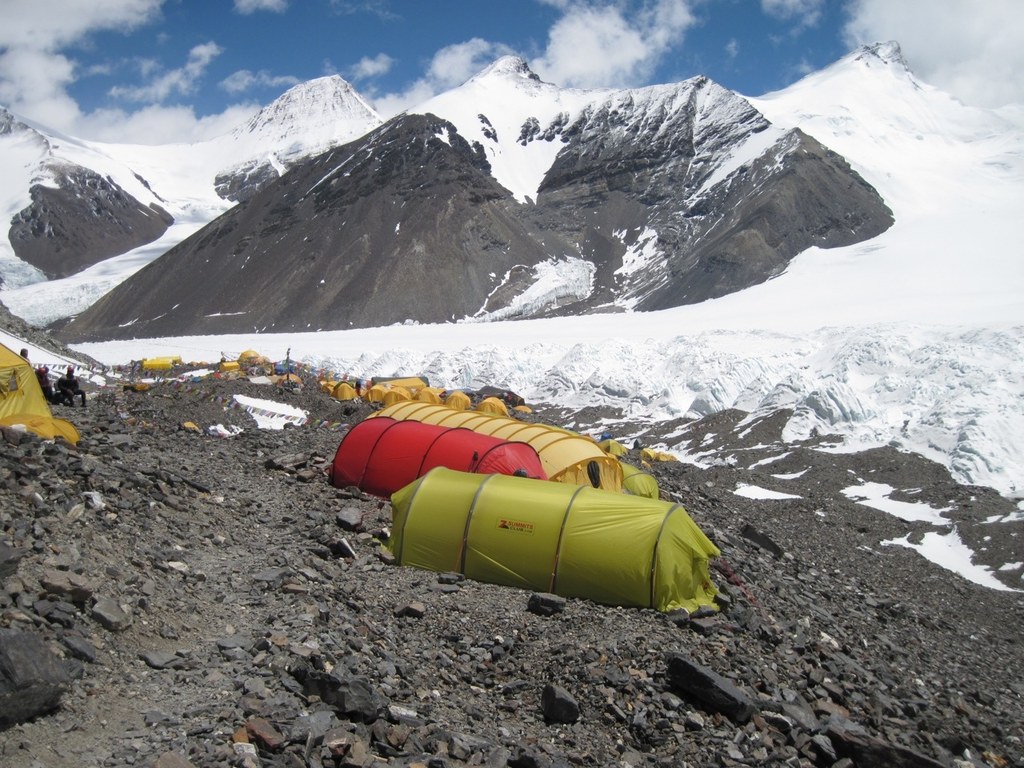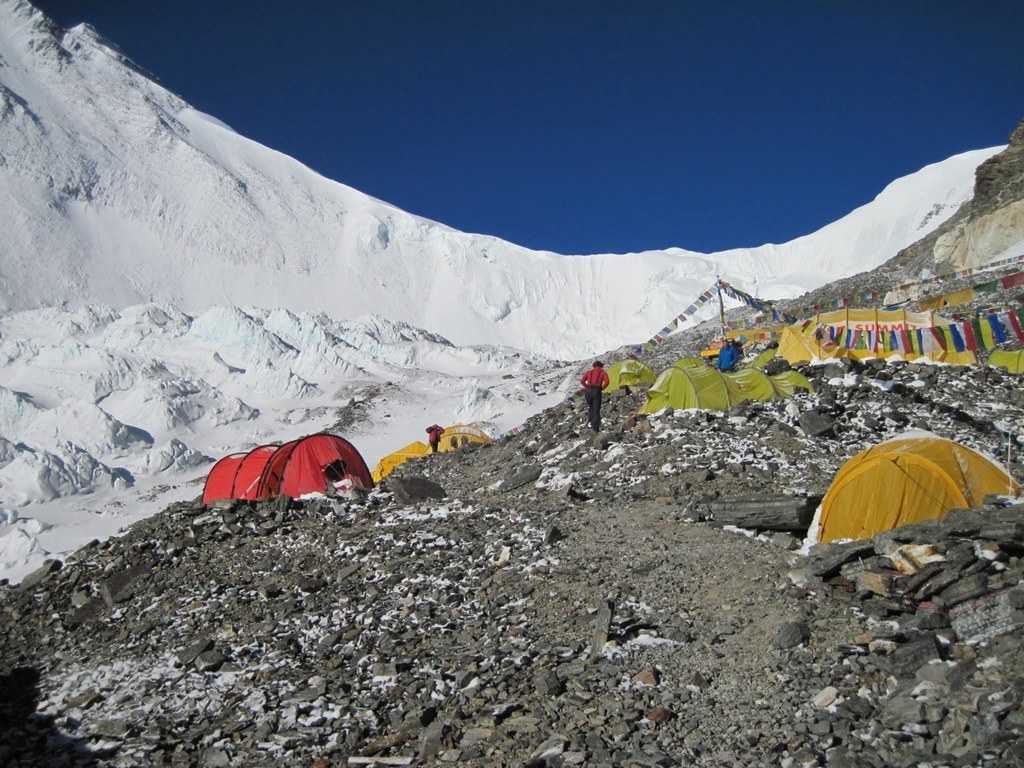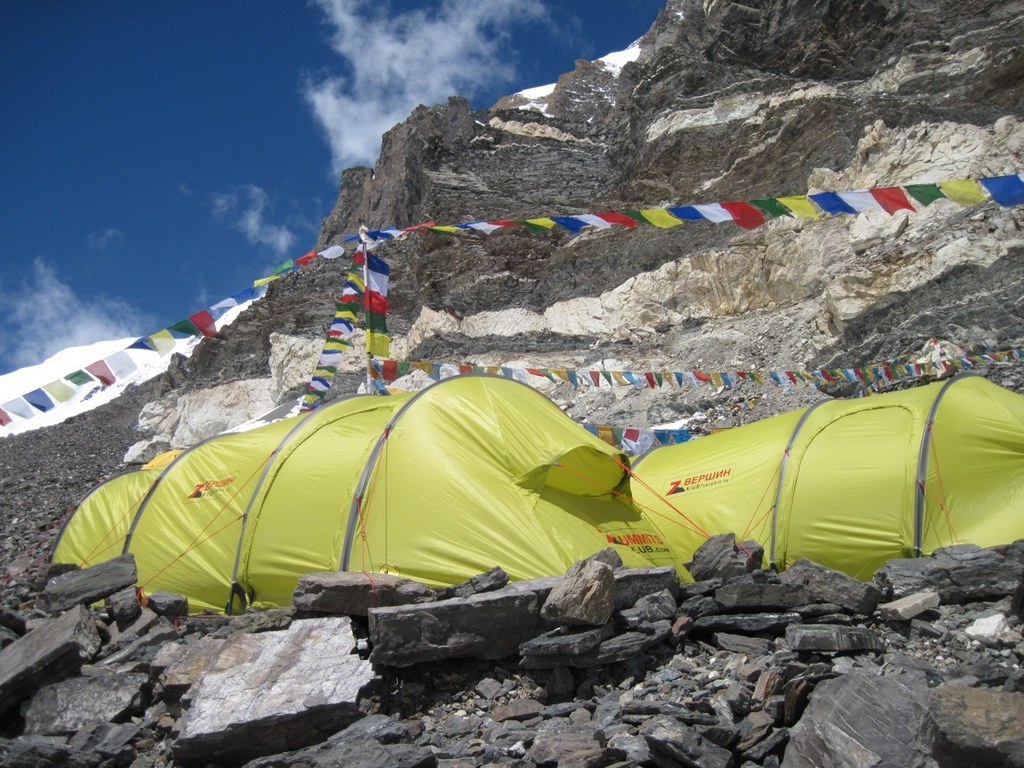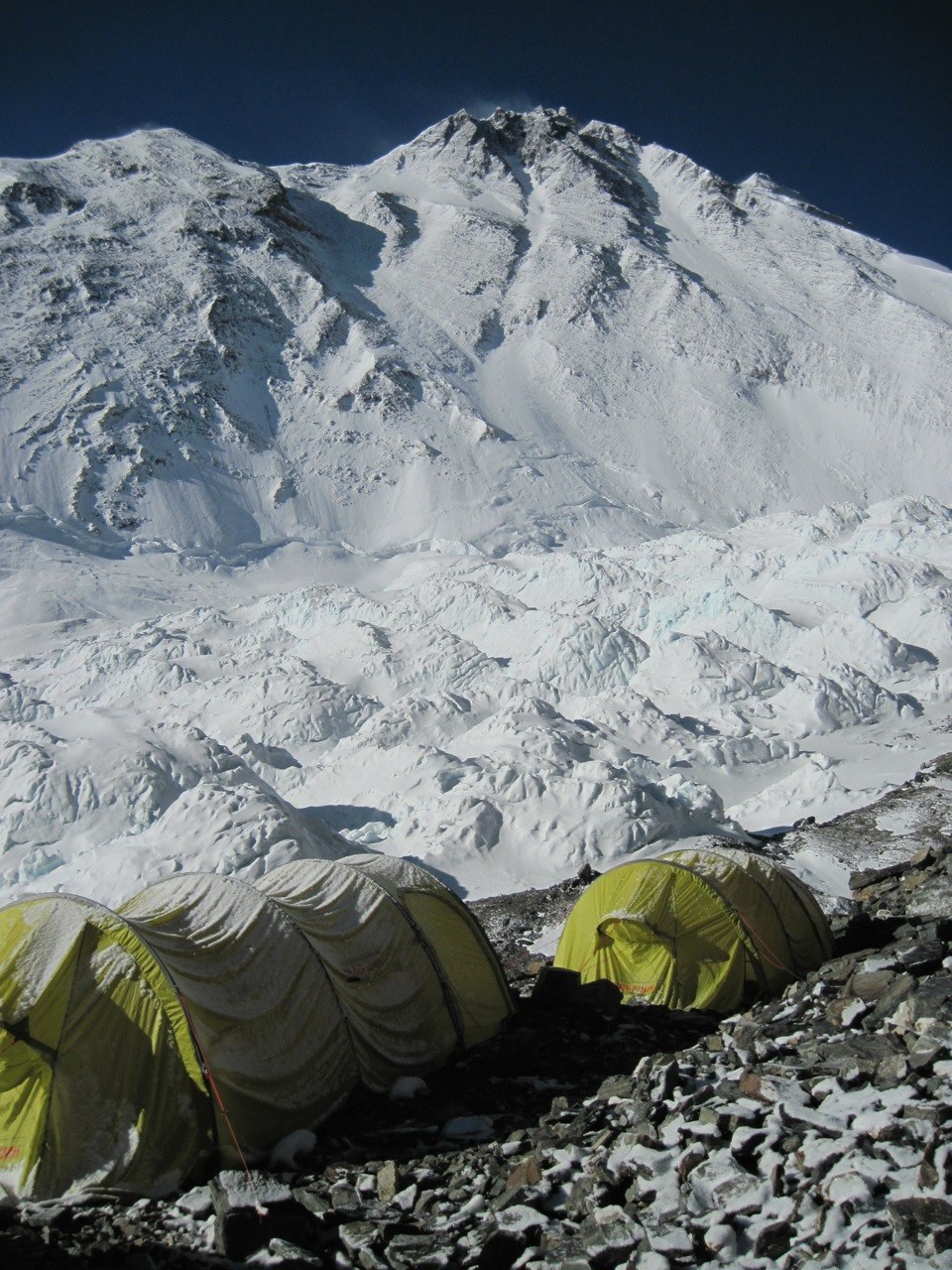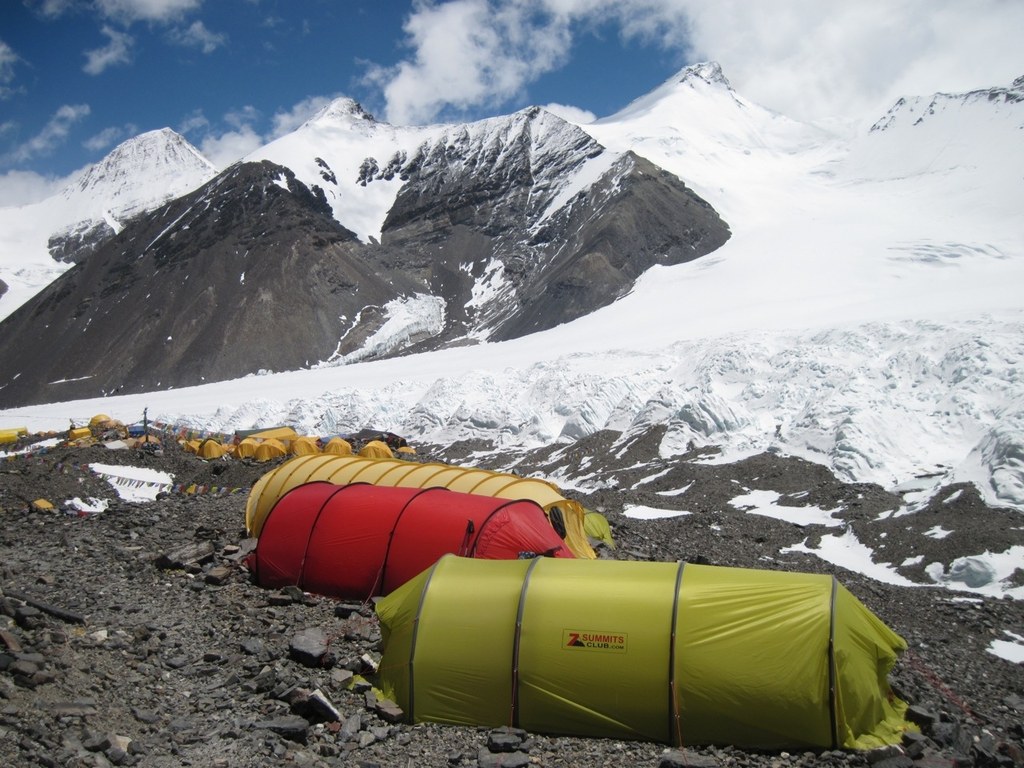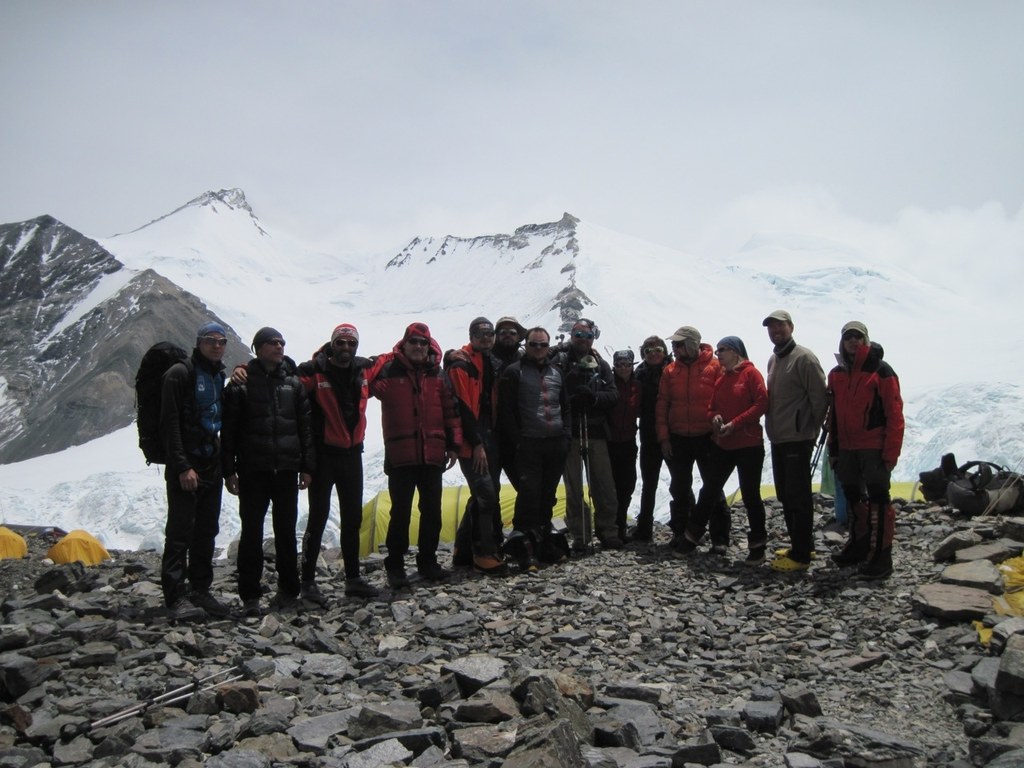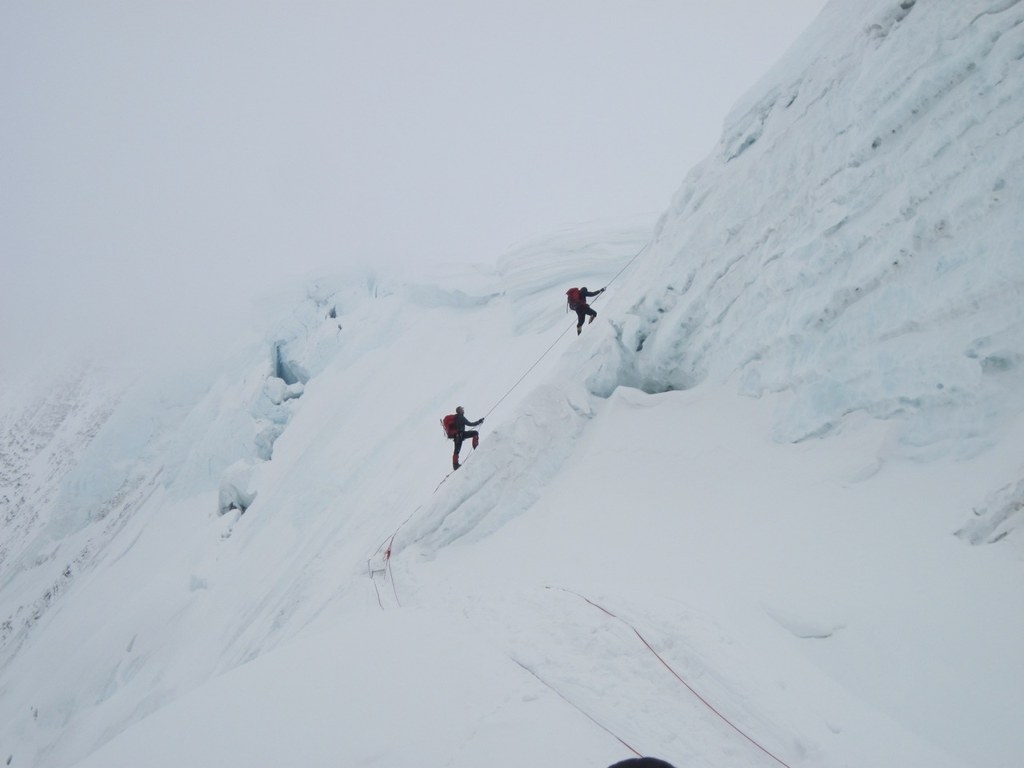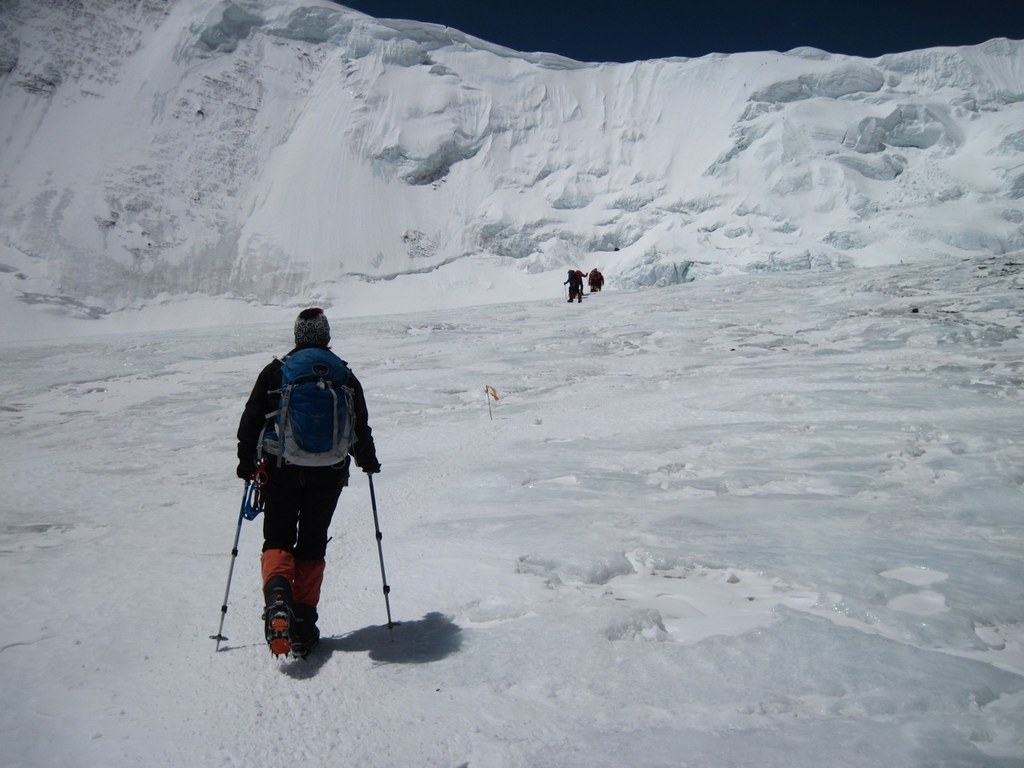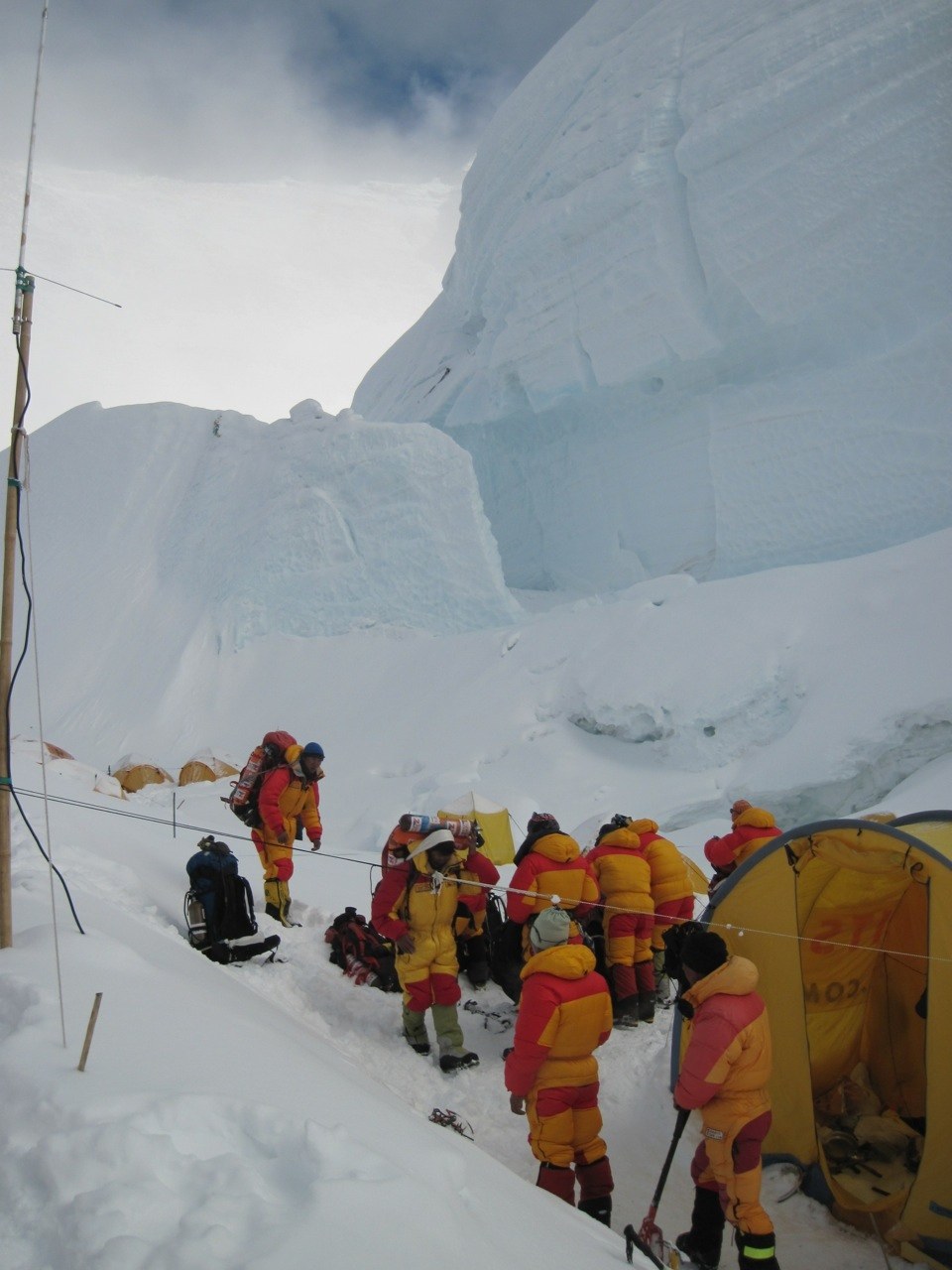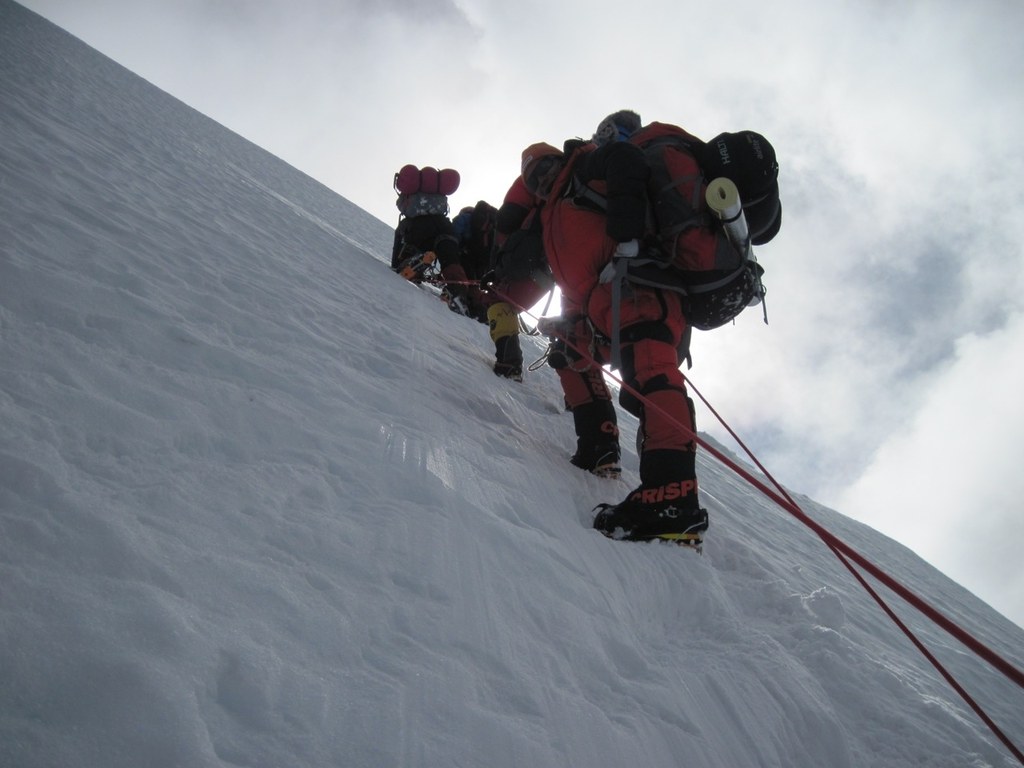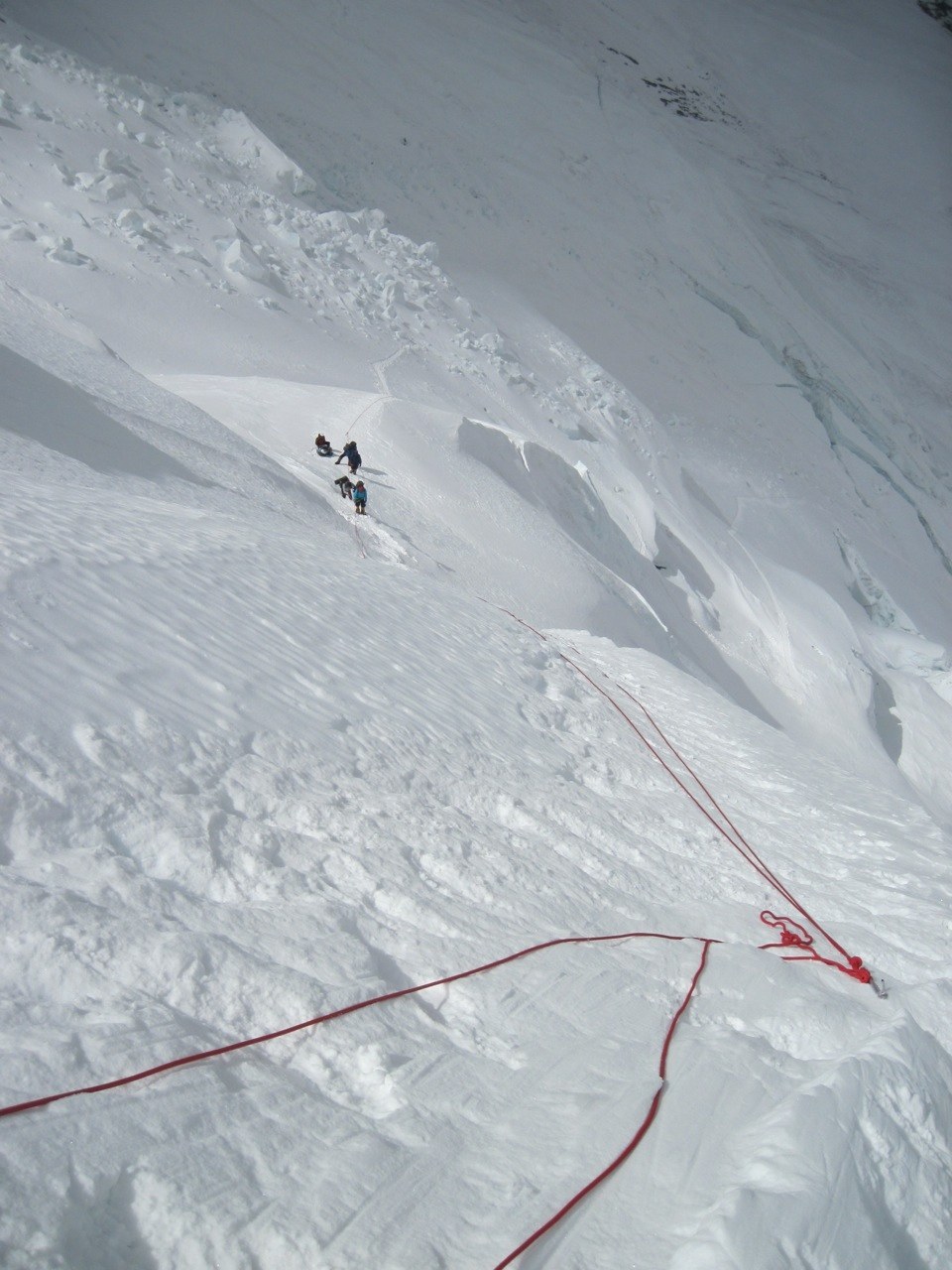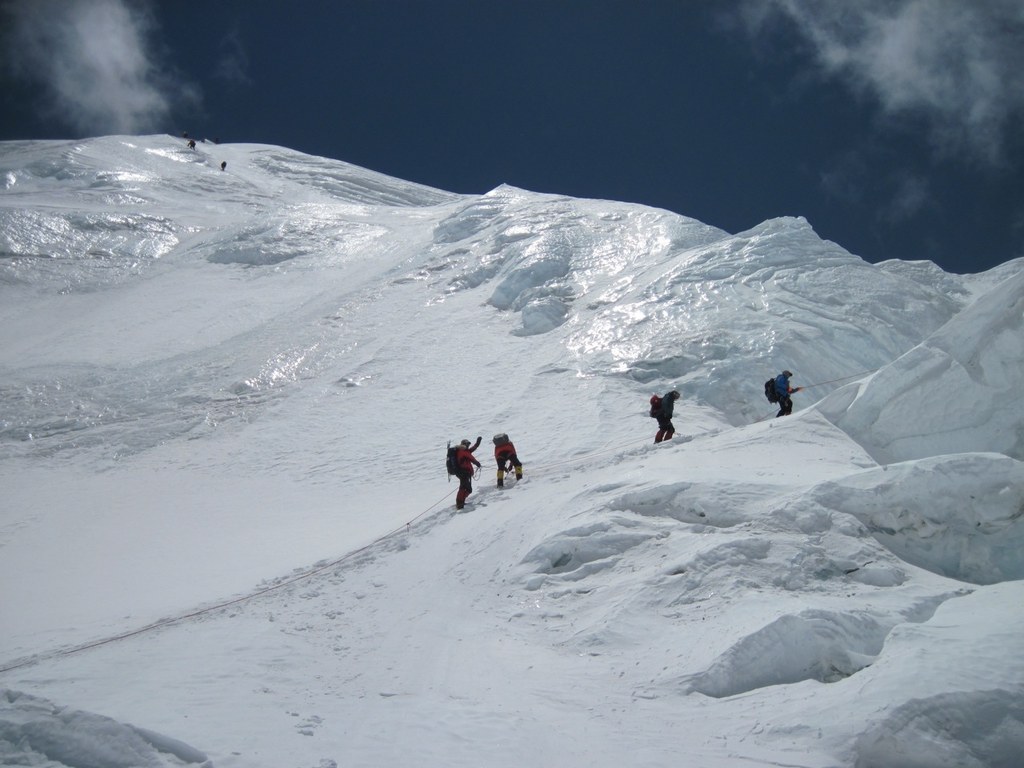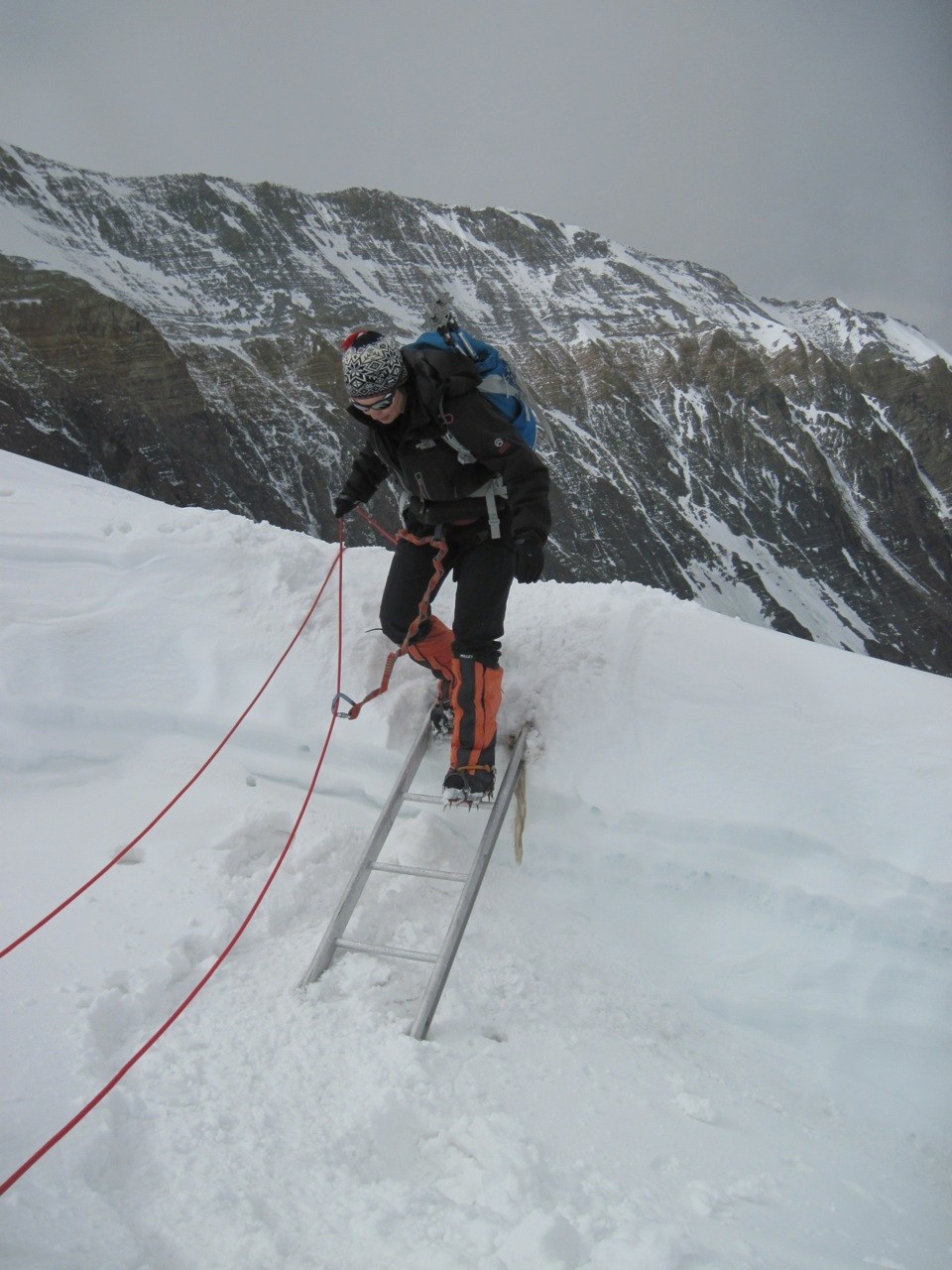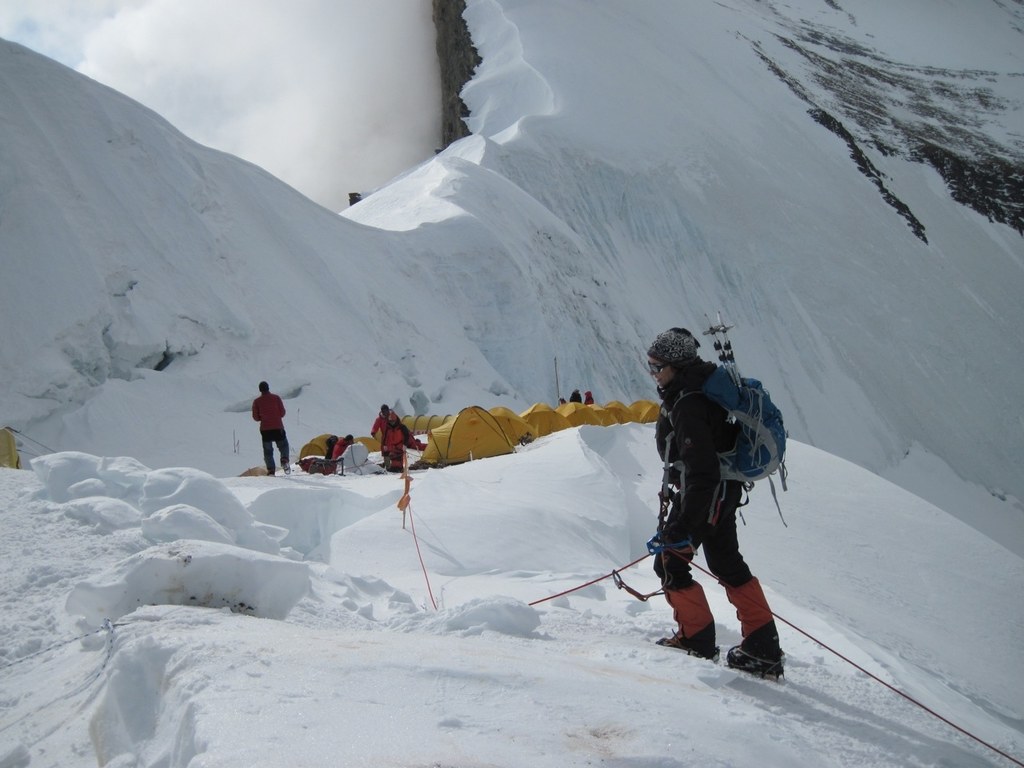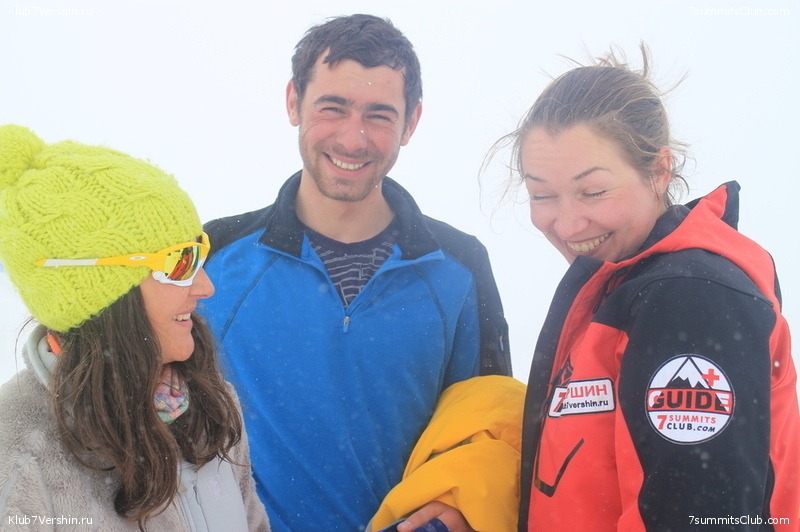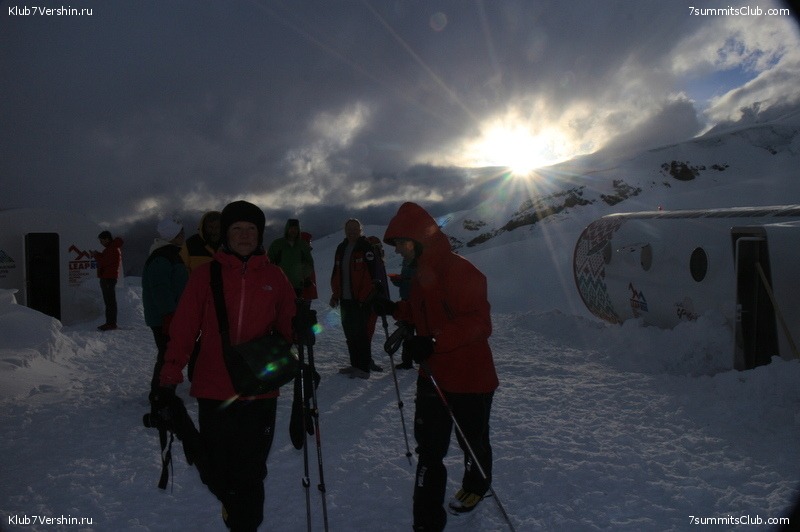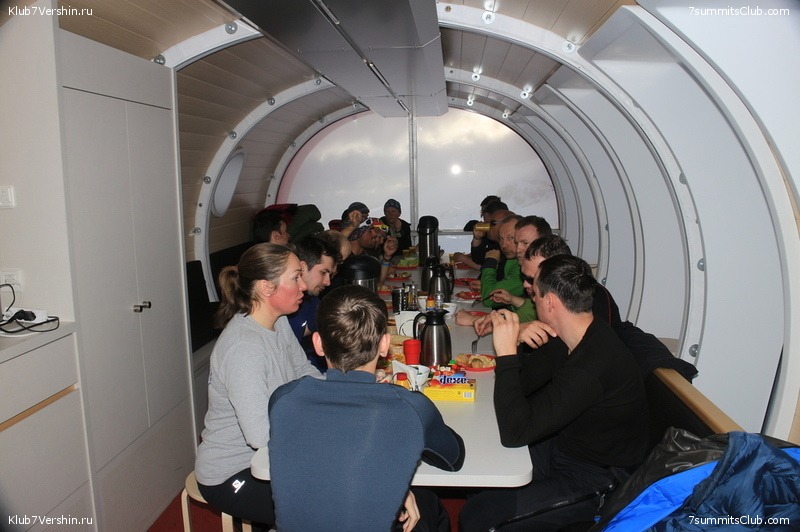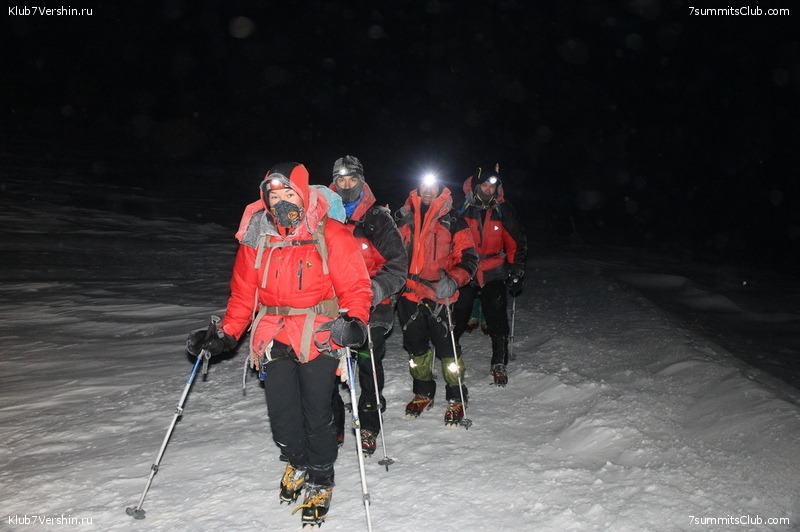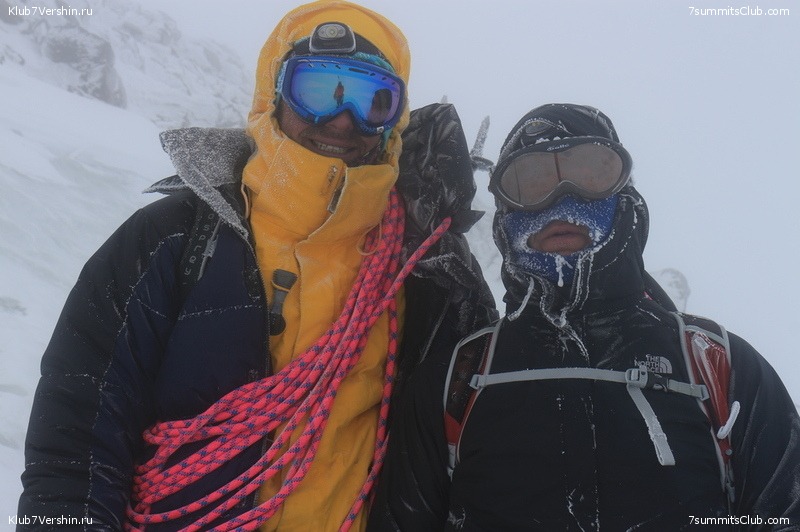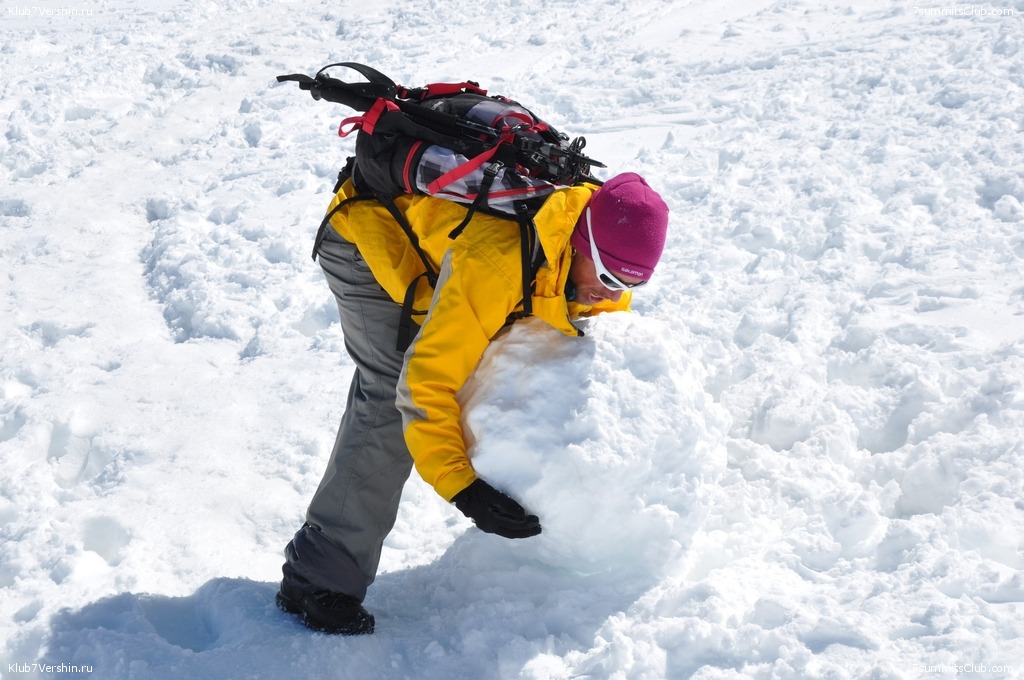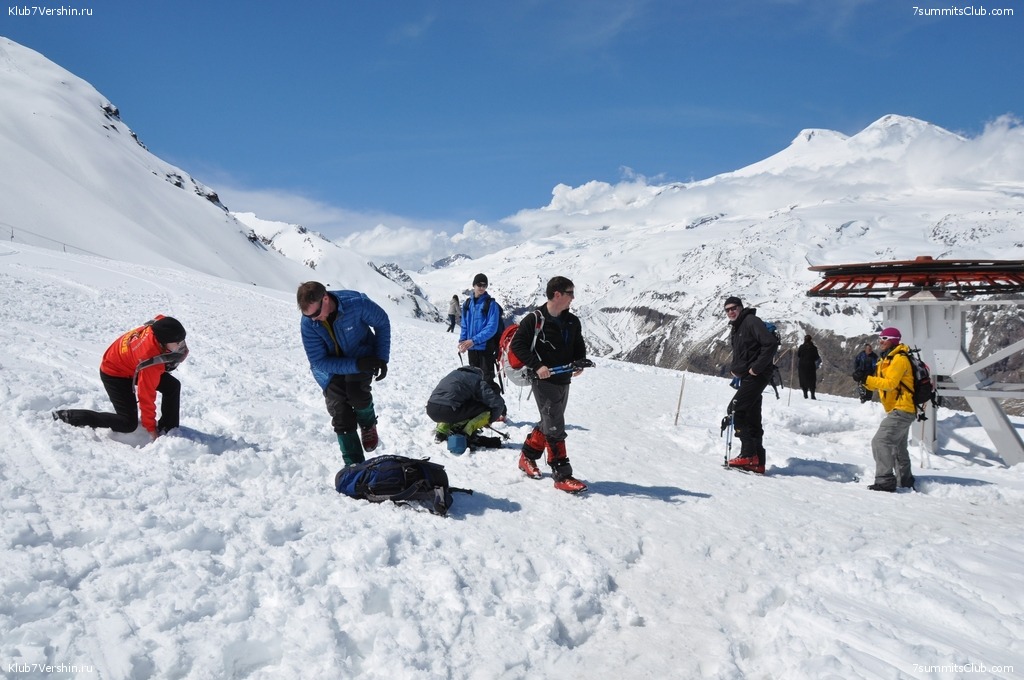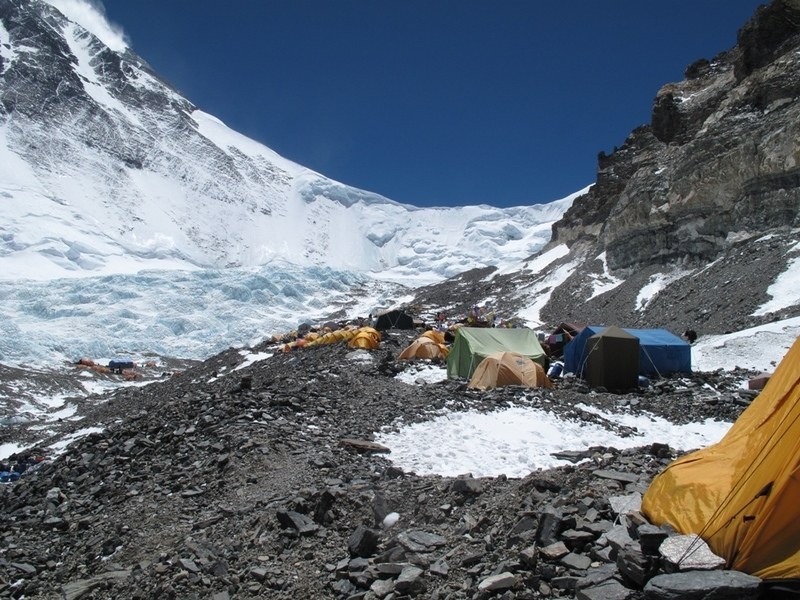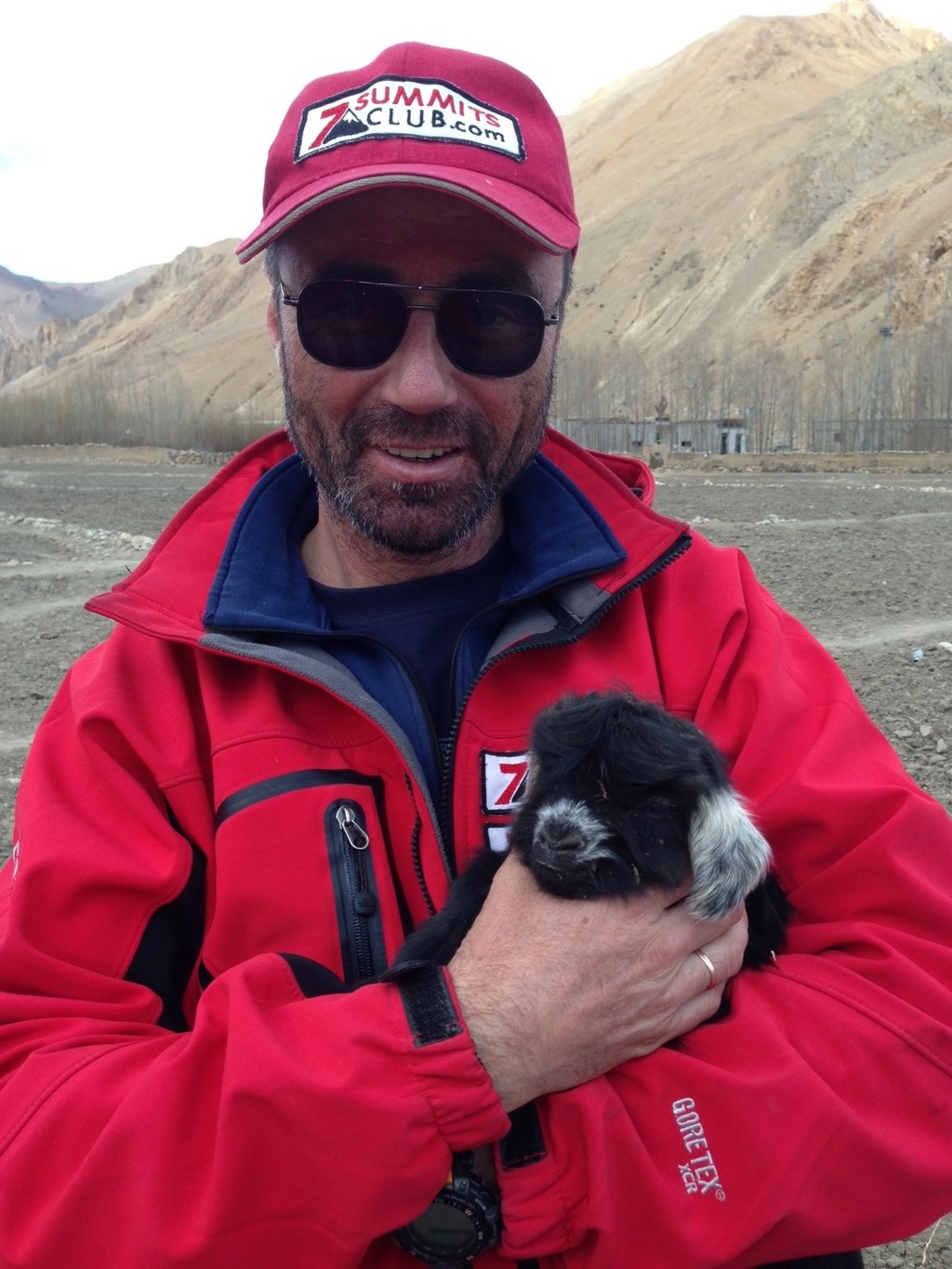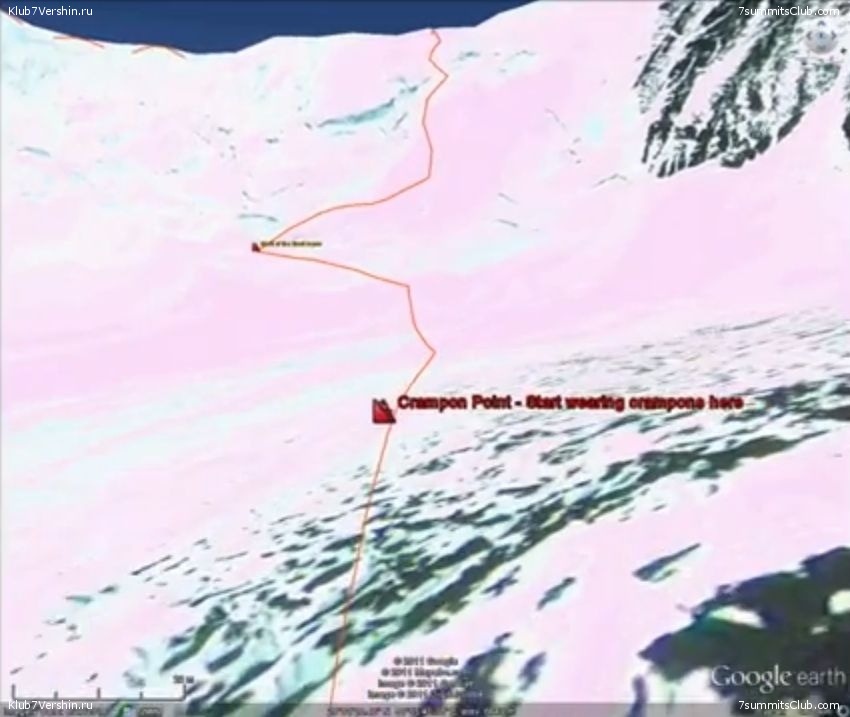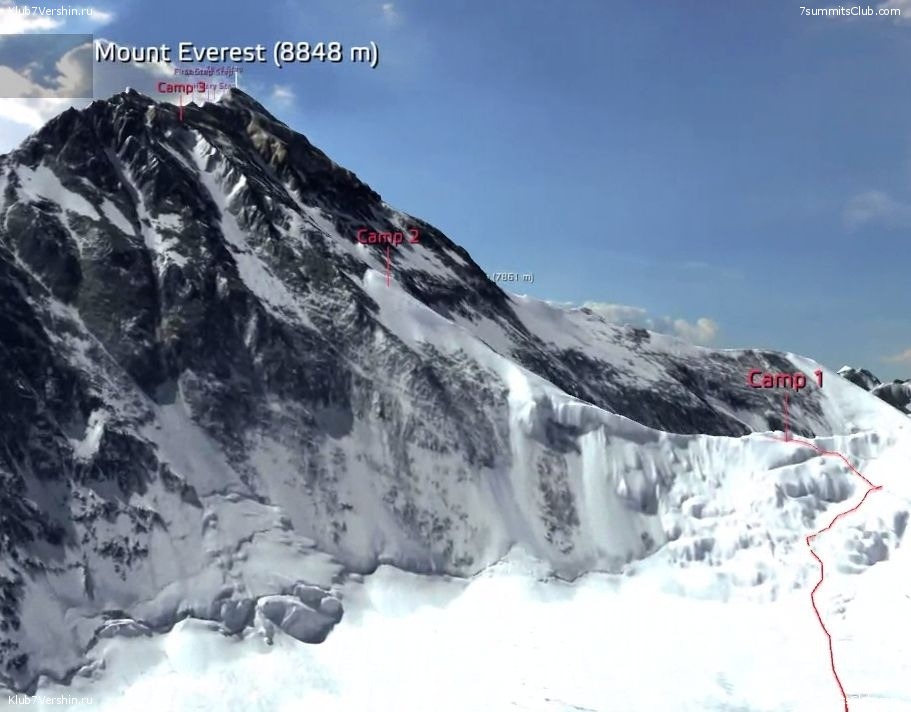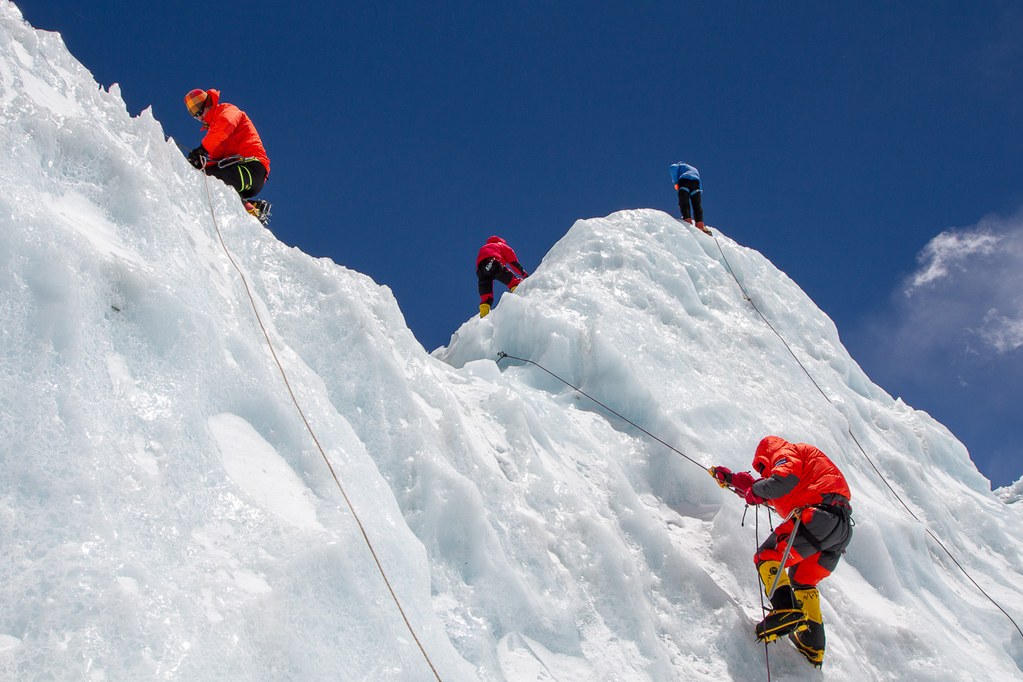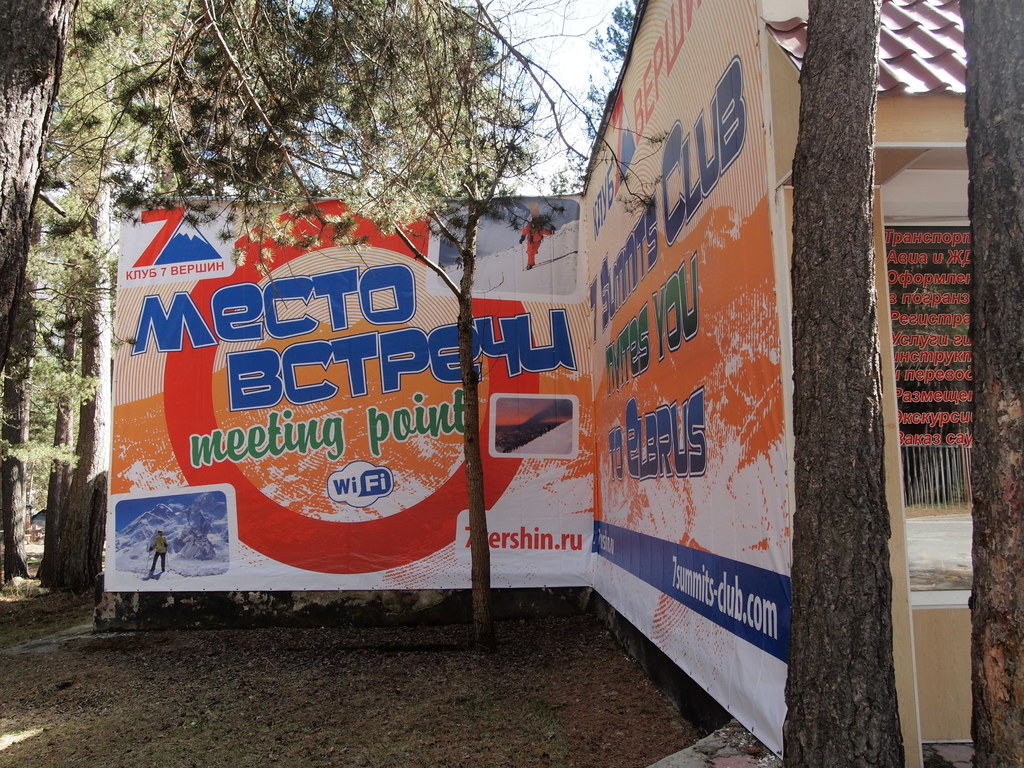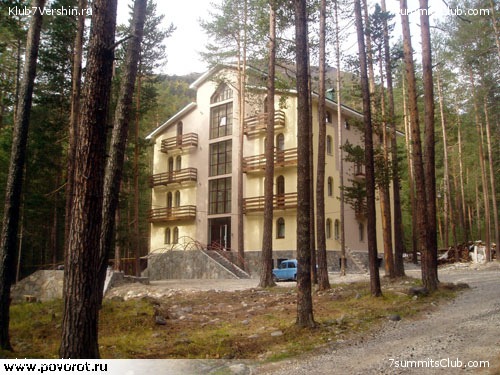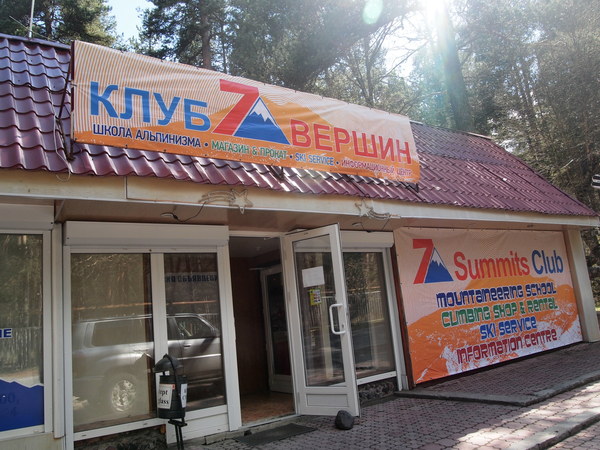"7 Summits + 2 Poles" project news - Page 142
SUMMIT of Mount Elbrus! The first ascent of this summer
Elbrus.
Guide 7 Summits Club Alexandra Sak reports: Hi! June 11 at 9:30 am, we were standing on the top of Mount Elbrus. The Gigant was in surprisingly good mood - probably the first such day since the beginning of the season: clear, bright moon, ...
Guide 7 Summits Club Alexandra Sak reports:
Hi! June 11 at 9:30 am, we were standing on the top of Mount Elbrus. The Gigant was in surprisingly good mood - probably the first such day since the beginning of the season: clear, bright moon, the stars, the beautiful sunrise, almost no wind. There is too much snow, but we managed. And as soon as we went down again all sucked. I'm Writing now from Leaprus refuge - outside we can not see anything, strong winds and snowing again. Overall, we were very fortunate that slipped. Can congratulate us :)
5 people were in the team:
Gulnara Talipova;
Andrei Polyakov with her daughter;
Alexei Kolesnikov;
Charles Nuzum (USA).
SUMMIT. The group of Dima Ermakov had reached the top of Mount Kilimanjaro
Kilimanjaro.
Seven Summits, hello! This is Dima Ermakov from Tanzania. Today, we all climbed Mount Kilimanjaro. The weather was beautiful, now we're going down. Everything is fine. Particularly it pleased that all this happened in my son's birthday. ...
Seven Summits, hello! This is Dima Ermakov from Tanzania. Today, we all climbed Mount Kilimanjaro. The weather was beautiful, now we're going down. Everything is fine. Particularly it pleased that all this happened in my son's birthday. What all together we are sending him our congratulations! In general, all is well with us. Hopefully tomorrow we will be at the hotel.
Group members: Philip Lerman, Irina Bykhovskaya and Mikhail Okolokulak.
Welcome to the new season at Mt. Elbrus ! With a new shelter!
Elbrus.
Our guide Sasha Sak from the slopes of Elbrus: We are at a new refuge: reached it, settled ... We had lunch today, then almost reached Pastukhov rocks, the wind prevented. Went down, waiting for dinner. In general, all good, feeling great, ...
Our guide Sasha Sak from the slopes of Elbrus: We are at a new refuge: reached it, settled ... We had lunch today, then almost reached Pastukhov rocks, the wind prevented. Went down, waiting for dinner.
In general, all good, feeling great, the mood is too great.
Tomorrow we learn to walk with crampons and ice axes, relax and wait for the weather.
NEW REFUGE
LEAPfactory places LEAPrus alpine station on russia’s highest mountain
http://www.designboom.com/architecture/leapfactory-leaprus-alpine-station-russia-06-06-2014/
The ‘s1′ eco-pod, developed by torino-based LEAPfactory, is a modular refuge structure designed specifically for extreme and remote environments. the building system is prefabricated and transported to any given location, and has been realized on many sites throughout Europe. The LEAPrus documentary takes viewers through the construction and assembly process of three shelters to create an alpine station (elevation 4,000 m) on the southern slope of mount Elbrus, located in the Caucasus range in Russia.
A trailer for the documentary: LEAPrus
http://vimeo.com/86043011
The alpine station is located at an elevation of 4,000 m on the southern side of Russia’s highest peak, mount Elbrus
The s1 shelters are able to withstand harsh weather conditions, and as a result allow adventurers to inhabit more extreme locations. Completely detached from any power grid, a photovoltaic film is incorporated into the outer shell, and is able to provide all necessary energy for the building’s equipment. The shape, materials, and construction of the units help to optimize its performance, while interior fittings provide a high level of comfort. By lifting the structures off of the terrain, minimal impact is created on the otherwise undeveloped landscape.
The last part of Everest expedition of 2014 in pictures by Alex Abramov
This season Mount Everest gave only to days for climb. We were lucky to manage to reach the top by all climbers and guides except two that got ill when acclimaizing. ...
This season Mount Everest gave only to days for climb. We were lucky to manage to reach the top by all climbers and guides except two that got ill when acclimaizing.
Our expedition is in Kathmandu: Mt. Everest Summiter List of Spring 2014
Everest.
Mt. Everest (North Side) Summiter List of Spring 2014 All our Members and Sherpas had reached the Summit of the Mt. Everest from Tibet Side! The Mt. Everest Summiter name list is :
Mt. Everest (North Side) Summiter List of Spring 2014
All our Members and Sherpas had reached the Summit of the Mt. Everest from Tibet Side!
The Mt. Everest Summiter name list is :
Alex Abramov from the North Col of Everest: all is OK, we continue our descent
Everest.
Alex report: Hello! Yesterday, May 25, our second team (all members and guides) also reached the summit of Everest. The weather was not very good. There were many people, too many. So we could not go down immediately to the camp ABC, as we ...
Alex report: Hello! Yesterday, May 25, our second team (all members and guides) also reached the summit of Everest. The weather was not very good. There were many people, too many. So we could not go down immediately to the camp ABC, as we usually do. The team spent the night at the camp an altitude of 7700 meters. Now we slowly continue to descend to ABC. We're good ... and perfectly. I will try to dictate names of summiters. First two Ladies: Iwona Zadarnowska from Poland and Natasha Matusova from Russia. Now on: Alexander Abramov , Sergey Larin , both for the sixth time, Dmitry Ermakov, Alexey Boutin ... Who else ? Igor Stolyarov, Vladimir Voronin of Ukraine, seven Sherpas and Ravil Shamgulov, a Canadian citizen. I hope no one has forgotten.
It was difficult climb, very difficult. But actually we were lucky with the weather. Because when the number of 100 people in one day started, if a hurricane or some snow, then some people would have remained on the mountain. That's right. In our expedition all climbed the top:
14 members 3 guides and 14 Sherpas.
All except those who left us after acclimatization due to illness. I mean Kostya Ugriumov and Patrick Butler from Ireland.
Now we are all on the North Col , but it is still too early to celebrate ....
Alex Abramov from Everest: SUMMIT! Our first team was on the top at 7 a.m.
Everest.
Hello! This is Alex Abramov. Today we have a great event. The first team - in strong wind and snow, reached the summit of Everest. They were on top at about 7 am, with a gap of about half an hour. All seven members, seven Sherpas and guide ...
Hello! This is Alex Abramov. Today we have a great event. The first team - in strong wind and snow, reached the summit of Everest. They were on top at about 7 am, with a gap of about half an hour. All seven members, seven Sherpas and guide Noel Hanna were on the summit of Everest. Now they go down. Surnames : Vasya Kernitsky, Zygmunt Berdyhovsky from Poland, Derek Mahon from Ireland, and Russian - Anton Seleznev, Sergey Dmitriev, Denis Abuev, Vlad Lachkarev. All now in the process of descent from the top…
And the second team goes to meet them from the camp of 7700, hopefully tonight to make the same heroic feat and go down alive and healthy. Goodbye!
Alex Abramov from North Col of Everest all goes according to plan, tomorrow – the summit bid ...
Everest.
Hello! Alex Abramov reports from the North Col of Everest. This is past few days, we hope - the last days of our expedition ... The first team of 9 members is now coming from the height of 7700 to the camp 8300 . Second team follows them ...
Hello! Alex Abramov reports from the North Col of Everest. This is past few days, we hope - the last days of our expedition ... The first team of 9 members is now coming from the height of 7700 to the camp 8300 . Second team follows them from a height of 7300 to 7700 . Good weather - not a cloud. Wind, for me from the tent ... well it seems pretty weak. Follow our news. Until now everything goes according to plan. And , in general, on the next night the first team should go for the summit. Goodbye!
At last it begins! Members of our expedition and guides of 7 Summits Club started to conquer Everest
Alex Abramov from the Everest base camp : As you understand, all members are alive and well, all ready to storm the Summit. May 17 th, after studying the weather forecast, the guides decided to start out in the morning on May 18th. Team led ...
Alex Abramov from the Everest base camp :
As you understand, all members are alive and well, all ready to storm the Summit. May 17 th, after studying the weather forecast, the guides decided to start out in the morning on May 18th. Team led by Noel Hanna came out of the Base camp to the Middle camp .
And tomorrow, the second team under the leadership of Alex Abramov will be start in the same direction.
Days of summit bid for two groups scheduled now for 25th and 26th of May .
The day before, we had a party on the end of the seating in the base camp. We invited the team Adventure Peaks, led by my friend Rob, with whom we often met in Antarctica.
It was a lot of music, and dance, and toasts, and even a " farewell cake ."
And see latest pictures:
Everest expedition the 7 Summits Club : big waiting at base camp began
Our team sits at the base camp and it looks like another 10 days the weather will not good. Forecast gave a good weather on May 27, may be. Of course, if the monsoon not comes. We tried to have fun, watch movies etc. Billiards Championship ...
Our team sits at the base camp and it looks like another 10 days the weather will not good. Forecast gave a good weather on May 27, may be. Of course, if the monsoon not comes.
We tried to have fun, watch movies etc. Billiards Championship of camp is in full swing. Maybe we'll go down to catch trout. Natasha and Sergei cooked Russian salad and fried potatoes.
In general, this year the weather does not make us happy: on the top constantly there is strong wind 100 km / h and more. Sherpas team have not fixed the ropes and said that until May 25 they could not do it.
The main thing that our mood is GREAT !
Alexander Abramov
leader of the expedition to Everest 2014
The open season party in Terskol
Elbrus.
Dear Friends! We opened the season on Elbrus! Italians sang, we drank and danced. We started the season very well and the whole season should be just super! Thanks to everyone who came, it was nice to see you after a long winter! "7 Summits ...
Dear Friends!
We opened the season on Elbrus!
Italians sang, we drank and danced.
We started the season very well and the whole season should be just super!
Thanks to everyone who came, it was nice to see you after a long winter!
"7 Summits Club" Terskol.
The party of friendship and acclimatization, devoted to the Victory Day.
Alex Abramov: Yesterday, the 9th of May the 7 Summits Club provided the party of friendship and acclimatization, devoted to the Victory Day. It passed in a real warm atmosphere!!! All members of different expeditions come to us. All, who ...
Alex Abramov: Yesterday, the 9th of May the 7 Summits Club provided the party of friendship and acclimatization, devoted to the Victory Day.
It passed in a real warm atmosphere!!!
All members of different expeditions come to us. All, who were in the Base camp. We sang, and ate, danced and played together.
Now our team, all 19 people, went down the valley to rest for 2 nights. Then we will return to the base camp and proceed to the main part of our climb.
SUMMIT! This year's first team of 7 Summits Club at the top of Elbrus
Elbrus.
Many thanks to our wonderful guides – they are heroes who took the whole group to the top, under bad weather and poor visibility, and most important of all was lowered back ! Also many thanks to our new partners from LipRus shelter ...
Many thanks to our wonderful guides – they are heroes who took the whole group to the top, under bad weather and poor visibility, and most important of all was lowered back !
Also many thanks to our new partners from LipRus shelter for the great service and delicious food and a warm welcome! Special excitement caused Going to the toilet, where it was snow-ice sessions for members of the expedition. All members of our group highlighted the chef Anastasia Kurbanova and her porridge, which, according to the group, has also been instrumental in the success of the expedition! Thank you Michael for internet and patience !
We are all down in Terskol, today sauna will be waiting for us, and tomorrow evening party on the opening season Elbrus 2014 !
Alex Abramov from the slopes of Mount Everest near the North Col
Everest.
Hello! This is Alexander Abramov . I 'm on the ice wall near the exit to the North Col . Beautiful weather, no wind, heat. I want to report that all is well with us . The first team is now climbing to the North Col , in order to go ...
Hello! This is Alexander Abramov . I 'm on the ice wall near the exit to the North Col . Beautiful weather, no wind, heat. I want to report that all is well with us . The first team is now climbing to the North Col , in order to go on to a height of 7500 meters, with the purpose of acclimatization . The second team is at an altitude of 6400 meters ... However, there are changes. Kostya Umrilov is down to the base camp. Also our “merry Pole” Ivona Zadarnovska is going now down to the base camp , she has a strong cough. And Vladimir Voronin from Ukraine is also descending , he has a fever . But I hope that after week at base camp, they should get better. The remaining members of the expedition all cheerful, happy , and ready to conquer Everest . It will take approximately 15 to 19 th of May , or it can be from 19 to 23 th May . That'stheinformationwehave. Hi!
News from Elbrus from Alexandra Sack, a guide of the 7 Summits Club
Elbrus.
Our group of 6 people stay at the shelter of Leaprus now. It is great place: warm, fun, there is internet. That's just the weather is not yet good. Today we tried to go to the Pastukhov rocks, but we were blown from 4300. But we do not ...
Our group of 6 people stay at the shelter of Leaprus now.
It is great place: warm, fun, there is internet. That's just the weather is not yet good. Today we tried to go to the Pastukhov rocks, but we were blown from 4300. But we do not despair, we eat well, sleep and wait for a weather window. Tomorrow - day of rest and training on snow and ice.
Below there are a few photos from yesterday's acclimatization Cheget. The day was amazing, the sun, sparkling snow, wonderful view.
Best regards!
Sasha.
Everest: Two groups together are resting at the ABC camp
Everest.
Hello! This is Alex Abramov, from the Advanced base camp at the height of 6400 meters, on Everest. Our second team descended from the North Col. Their overnight on 7000 was quite good. Unfortunately, we were forced to send down Konstantin ...
Hello! This is Alex Abramov, from the Advanced base camp at the height of 6400 meters, on Everest. Our second team descended from the North Col. Their overnight on 7000 was quite good. Unfortunately, we were forced to send down Konstantin Umrilov, he fell ill. Expedition proceeds. Tomorrow the first team again is going to go on the North Col. To spend the night and the next day to try to climb on 7500. After that the second team does the same heroic feat and by May 9th all members and guides have to gather in the base camp. On May 9 we plan a traditional party where we invite usually all base camp. Weather is so-so, again brings down snow. Now we had dinner and very quietly dispersed on our tents. All, good-bye!
Alex Abramov from ABC camp
Everest.
Hello! This is Alexander Abramov, from cold Himalayas, Everest Expedition. Hello, warm, spring Moscow! Yesterday the first half of our team spent a night at 7 thousand on the Saddle (North Col). The second team left there today. A cold wind ...
Hello! This is Alexander Abramov, from cold Himalayas, Everest Expedition. Hello, warm, spring Moscow! Yesterday the first half of our team spent a night at 7 thousand on the Saddle (North Col). The second team left there today. A cold wind blows. But we do not lose heart. Everything else, internet modem is broken. So that do not wait images in the coming days. And in general, all is well. The food is good, the people are nice..... Goodbye!
Alex Abramov from ABC camp
Hello! This is Alex Abramov from a height of 6400 meters, from advanced base camp. Today the first team (8 people) is here . We had breakfast , now it will be held ice classes. We will train ascending on fixed ropes, because tomorrow is our ...
Hello! This is Alex Abramov from a height of 6400 meters, from advanced base camp. Today the first team (8 people) is here . We had breakfast , now it will be held ice classes. We will train ascending on fixed ropes, because tomorrow is our first team goes to the North Col of Everest in order to spend the night at an altitude of 7000 meters. The second team of 11 people spent the night in the Middle camp , and now rises toward the ABC camp. Tonight should all meet here. All feel fine, acclimatization goes according to plan, that is, sufficiently smooth, soft acclimatization.
Tonight snowed 5-10 sm. Everything is covered in white snow, very beautiful.
Tomorrow Sherpa and Lama will hold the opening of the camp ABC – puja. I will be prayer, etc… A general, all is perfect, the weather is nice, the sun shines. Justafternoonsometimes snows . Andsoallgood. Goodbye !
Big party dedicated to the beginning of the season “Elbrus 2014”
Elbrus.
Dear friends! Finally we are at the cusp of a new season on Elbrus! So, we have organized a big party dedicated to the beginning of the season “Elbrus 2014”. Our party will take place on 9, May on the terrace of a well-known ...
Dear friends!
Finally we are at the cusp of a new season on Elbrus!
So, we have organized a big party dedicated to the beginning of the season “Elbrus 2014”. Our party will take place on 9, May on the terrace of a well-known hospitable hotel “Povorot”.
You will be able not only to meet your friends who you haven't seen for a long time but also enjoy the songs of a famous Italian singer Giampaolo Spatola from sunny Sicilia.
This year we open our season on Victory Day. On this day we more than ever realize the value of friendship, mutual understanding, a peaceful sky over our heads and that it is not money but love rules the world. Our guest Giampaolo Spatola often says: our world is fragile but at the same time indestructible if all the nations understand each other, if there is an advertence and tolerance. The main topics of Giampaolo's songs are Peace and Love which band people together regardless of their nationality, language, skin color, faith or wealth.
Let us appreciate peace and love and carry these light feelings through all the season.
We love you. We are waiting for you. You are welcome to our party.
Office " 7 Summits Club " Terskol daily from 10 to 20
indoor shop " 7 Summits Club "
Location : The village Terskol turn to Tcheget
Anna Abramova - branch coordinator
Office phone: +7-866-38- 17/07/71
Mobile : +7-928-711-97-70 , +7-928-720-26-94
E-mail: info@7vershin.ru
